- Media & Industry
- Meetings & Events
- Select Language 简体中文 繁體中文(香港) 繁體中文(臺灣) India (English) Bahasa Indonesia 한국어 ภาษาไทย Tiếng Việt Singapore (English) Philippines (English) Malaysia (English) Australia/New Zealand (English) Français Deutsch Italiano Español United Kingdom (English) Nordic countries(English) Canada (English) Canada (Français) United States (English) Mexico (español) Português العربية Japan(日本語) Global (English)
- India (English)
- Bahasa Indonesia
- Singapore (English)
- Philippines (English)
- Malaysia (English)
- Australia/New Zealand (English)
- United Kingdom (English)
- Nordic countries(English)
- Canada (English)
- Canada (Français)
- United States (English)
- Mexico (español)
- Global (English)
- Fujiyoshida
- Shimonoseki
- Ishigaki Island
- Miyako Island
- Kerama Island
- Tokyo Island
- Koka & Shigaraki
- Hida Takayama
- Ginza, Nihonbashi
- Beppu & Yufuin (Onsen)
- Ginzan Onsen
- Nagasaki Islands

- Kumano Kodo
- Shikoku Karst
- Amami Oshima
- Hachimantai
- Omihachiman
- Aizuwakamatsu

- Diving in Japan
- Skiing in Japan
- Seasonal Flowers in Japan
- Sustainable Outdoors
- Off the Beaten Track in Japan
- Scenic Spots
- World Heritage
- Home Stays & Farm Stays

- Japanese Gardens
- Japanese Crafts
- Temple Stays
- Heritage Stays
- Festivals and Events
- Theater in Japan
- Japanese Tea Ceremony
- Cultural Experiences in Japan
- Culture in Japan

- Local Cuisine Eastern Japan
- Local Cuisine Western Japan
- Local Street Food
- Japan's Local Ekiben
- Japanese Whisky
- Vegetarian and Vegan Guide
- Sushi in Japan Guide
- Japanese Sake Breweries

- Art Museums
- Architecture
- Performing Arts
- Art Festivals
- Japanese Anime and Comics
- Japanese Ceramics
- Local Crafts

- Scenic Night Views
- Natural Wonders
- Theme Parks
- Samurai & Ninja
- Iconic Architecture

- Wellness Travel in Japan
- Japanese Ryokan Guide
- A Guide to Stargazing in Japan
- Relaxation in Japan
- Forest Bathing (Shinrin-yoku)

- Experiences in Japan
- Enjoy my Japan
- National Parks
- Japan's Local Treasures
- Japan Heritage
- Snow Like No Other
- Wonder Around Japan

- Visa Information
- Getting to Japan
- Airport Access
- COVID-19: Practical Information for Traveling to Japan
- Anime Tourism
- Countryside Stays
- Accessible Tourism
- Hokkaido Great Outdoors
- Scenic World Heritage in Tohoku
- Shikoku’s Nature and Traditions
- Southern Kyushu by Rail

- Traveling by Rail
- How to Travel by Train and Bus
- JR Rail Passes
- Scenic Railways
- Renting a Car
- Sustainable Travel in Japan
- Travel Brochures
- Useful Apps
- Online Reservation Sites
- Eco-friendly Accommodation
- Luxury Accommodations
- Traveling With a Disability
- Hands-free Travel
- How to Book a Certified Tour Guide
- Volunteer Guides
- Tourist Information Center

- Japanese Manners
- Spring in Japan
- Summer in Japan
- Autumn in Japan
- Winter in Japan
- Cherry Blossom Forecast
- Autumn Leaves Forecast

- Japan Visitor Hotline
- Travel Insurance in Japan
- Japan Safe Travel Information
- Accessibility in Japan
- Vegetarian Guide
- Muslim Travelers
- Safety Tips

- JAPAN Monthly Web Magazine
- Arts & Cultures
- Nature & Outdoor
- Festivals & Events
- Insider Blog
- Things to do
- Local Guides
- Food & drink
- Traditional
- Hokuriku Shinetsu

My Favorites
${v.desc | trunc(25)}

Planning a Trip to Japan?
Share your travel photos with us by hashtagging your images with #visitjapanjp
- Ginza & Nihonbashi
- Tokyo Stock Exchange
Tokyo Stock Exchange 東京証券取引所
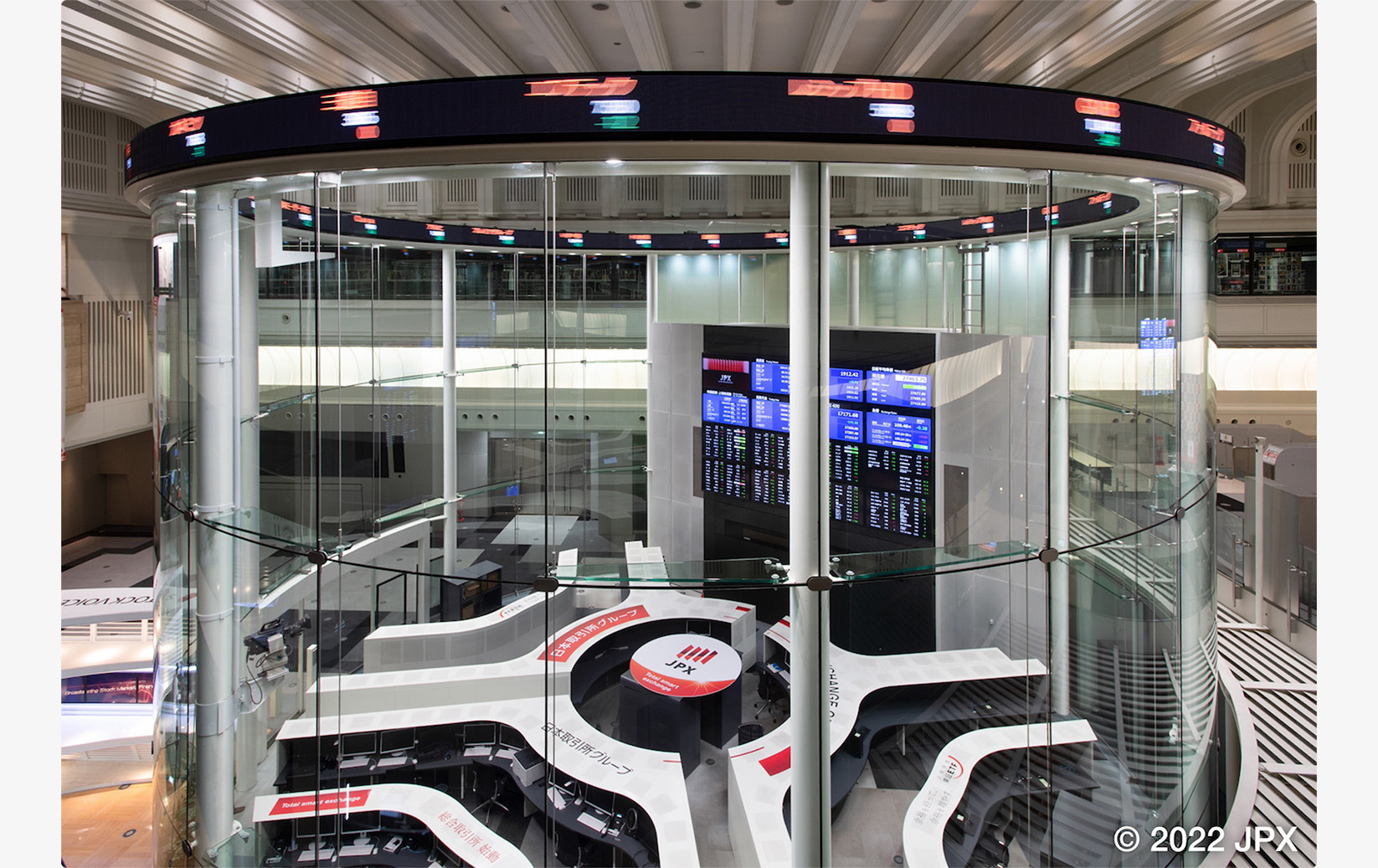
2-1 Nihonbashi Kabuto-cho, Chuo-ku, Tokyo-to
- View on Google Maps
- Get Transit Info
Looking into the engine that drives Japan's economy
The Tokyo Stock Exchange (TSE) is one of the largest stock exchanges in Asia by trading volume. You can tour the TSE facility to see the inner workings of Japan's economy.
Quick Facts
The exchange lists approximately 3,800 companies
Admission is free
How to Get There
The exchange can be reached by train or taxi.
The TSE is a short walk from Kayabacho and Nihombashi stations on the Tozai, Hibiya, and Toei Asakusa lines.
Day trading
You can take a free English-language guided tour of the exchange. See the ceremonial bell that once signaled the start of a trading day, and try your hand at a PC trading simulation and find out if you've got what it takes to be a stockbroker.
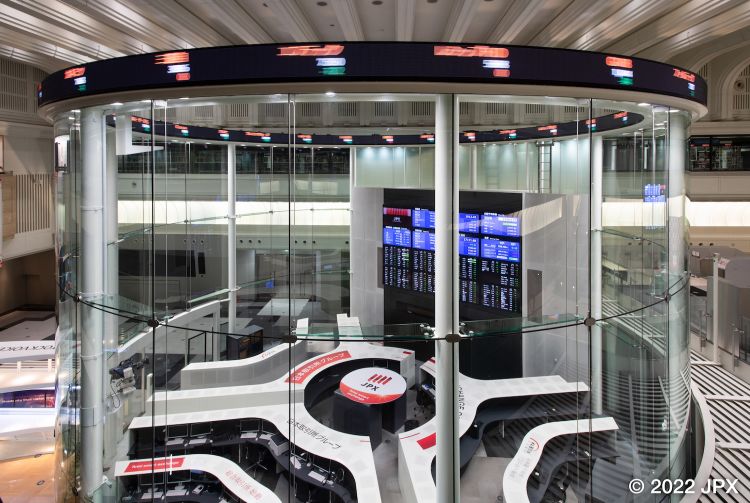
The trading floor looks much like a war room straight out of a movie set.
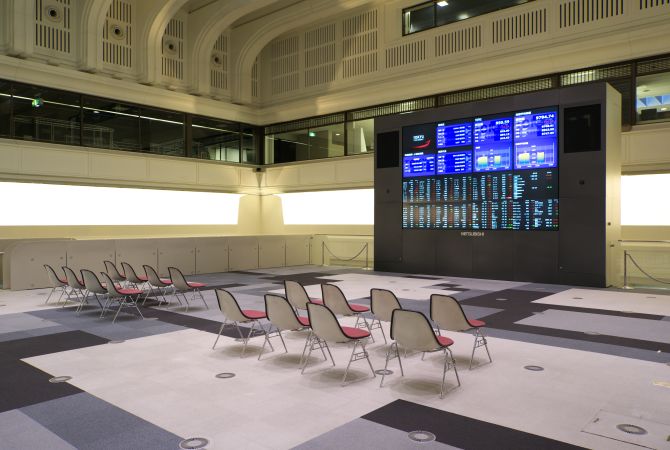
The madness behind the money
The stock exchange is a frenzy of activity during trading hours. Even when it's not in session, however, the sleekly-designed facility is atmospheric and impressive. There is also a museum on-site displaying key documents from the TSE's history.
* The information on this page may be subject to change due to COVID-19.
Recommended for You
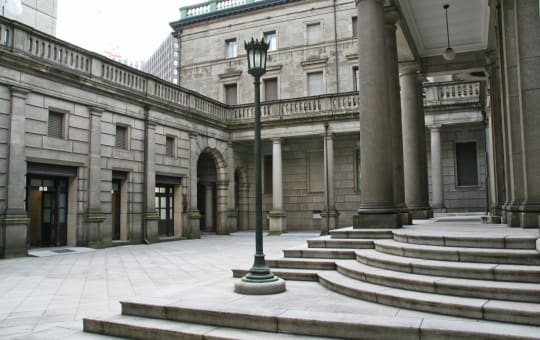
Please Choose Your Language
Browse the JNTO site in one of multiple languages
Tokyo Stock Exchange
- Published on : 27/12/2012
- by : Japan Experience
- Add to favorites
- History of the Tokyo Stock Exchange
- Getting to the TSE
Tokyo Stock Exchange 東京証券取引所
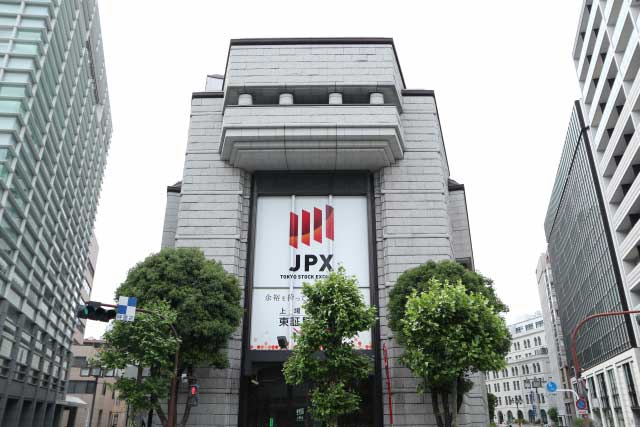
The Tokyo Stock Exchange (TSE) is operated by the Japan Exchange Group (JPX) which came into being in 2013 when the Tokyo Stock Exchange merged with Osaka Securities Exchange.
The exchange lists over 2,000 Japanese companies and over 30 foreign companies.
Stocks listed are divided into 4 sections:
First Section for large companies Second Section for medium-sized companies Mothers section for high-growth and emerging startups begun in 1999. Jasdaq Section
The main Japanese indices tracking the TSE are the TOPIX (TOkyo stock Price IndeX), which tracks the companies of the TSE's First Section and the Nikkei 225 chosen by the Nihon Keizai Shimbun (Japan's biggest business daily newspaper ).
Around 120 Japanese and foreign securities companies operate on the Tokyo Stock Exchange. Big foreign foreign securities firms include Goldman Sachs, J.P. Morgan and Morgan Stanley.
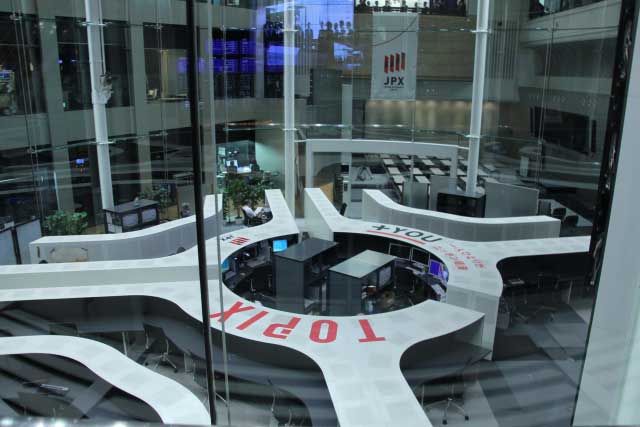
History of the TSE
The first Tokyo Stock Exchange started in 1878 as part of the westernization of Japanese finance and industry during the Meiji Period . During the war the Tokyo exchange was combined with exchanges in other cities. In 1949 the new Tokyo Stock Exchange opened at its present Nihonbashi location.
Since 2012, the Tokyo Stock Exchange has featured the Tokyo Pro Market , geared for professional investors and characterized by a designated adviser, or "J-Adviser," system.
Japan has 5 stock exchanges in Tokyo, Osaka (OSE), Nagoya (NSE), Sapporo and Fukuoka (NSE).
Tokyo Stock Exchange ( jpx.co.jp ) 2-1 Nihombashi Kabutocho Chuo-ku, Tokyo 103-8224 Tel: 03 3665 1881 Operating hours are 9 am-11 am; 12.30 pm to 3 pm. Visitors are allowed (West Entrance)
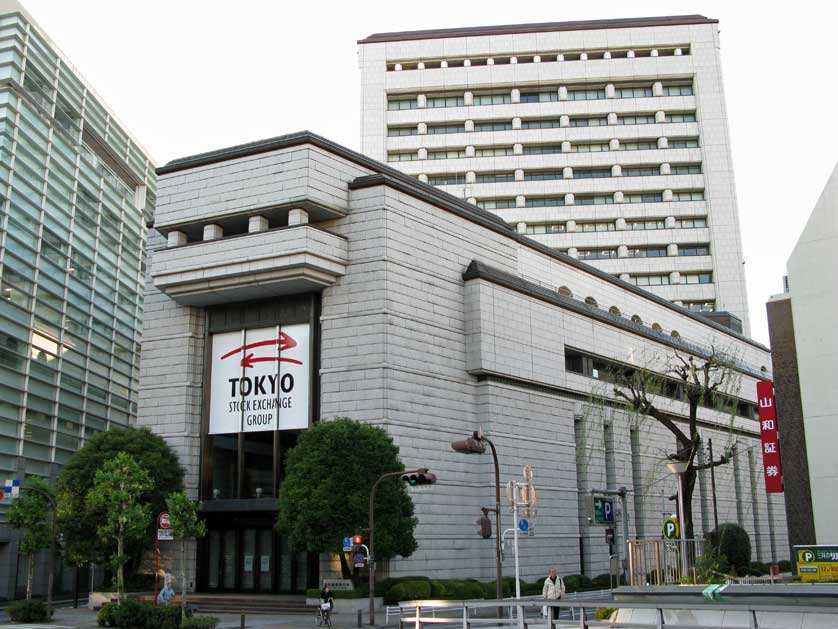
The TSE is a short walk from these stations: Kayabacho Station on the Tozai subway line, exit 11 Kayabacho Station on the Hibiya Line, exit 7 Nihombashi Station on the Toei Asakusa line, exit D2
Books on Tokyo Japan
Tokyo Stock Exchange: The Tokyo Stock Exchange (TSE) is the world's second largest stock exchange. The prsent Tokyo Stock Exchange dates from 1949.
Our houses in Tokyo

Ikebukuro Nigo Rent a house in Tokyo
Kami-Ikebukuro, Tokyo
- 2 travelers
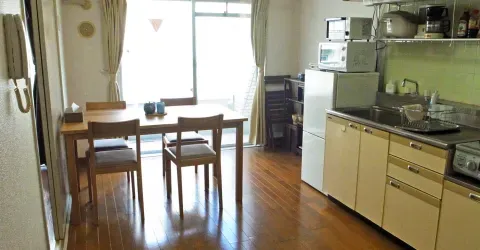
Asayake Rent a house in Tokyo
Ikebukuro, Tokyo
- 5 travelers

- 6 travelers

Yuyake Rent a house in Tokyo
- 4 travelers
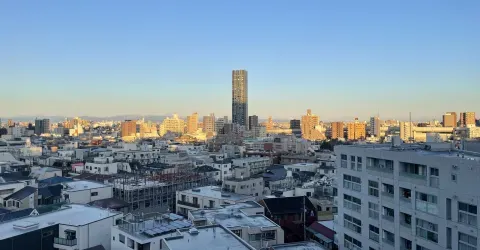
Nishibi Rent a house in Tokyo

Nishi-Ikebukuro 3 Rent a house in Tokyo
Our activities in Tokyo

Helicopter flight over Tokyo Activities in Tokyo
- Duration : 18 minute
- Location : Tokyo

Climbing Mount Fuji Fujiyoshida
- Duration : 2 day

Tokyo Game Show Activities in Tokyo
- Duration : 5 hour
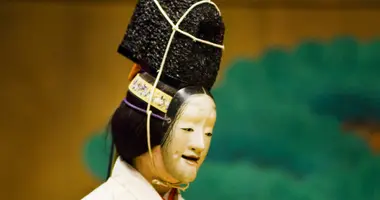
Noh, Ancient Japanese Theatre Activities in Tokyo
- Duration : 2 hour
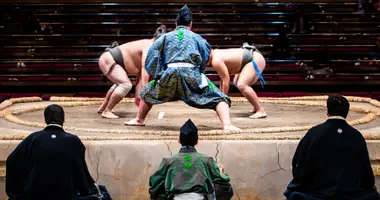
Tokyo Sumo Tournament (January, May and September) Activities in Tokyo
- Duration : 3 hour
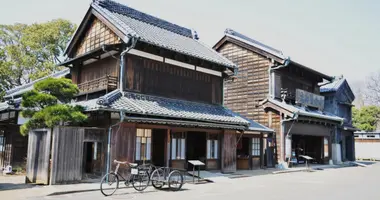
Edo-Tokyo Open Air Architectural Museum Activities in Tokyo
Our tours in Tokyo

Discover Japan Group Tours in Japan
- Duration : 13 days
- Locations : Tokyo, Hakone Mt Fuji, Kyoto, Nara, Hiroshima, Miyajima
- Included : Visits & meals, English-speaking tour leader, Hotel temple, 3*/4* Hotels & Ryokan

The Tokaido Road Group Tours in Japan
- Duration : 14 days
- Locations : Tokyo, Hakone Mt Fuji, Kyoto, Nara, Koyasan, Osaka
- Included : English-speaking tour leader, 3*/4* Hotels & Ryokan, Hotel temple, Visits & meals
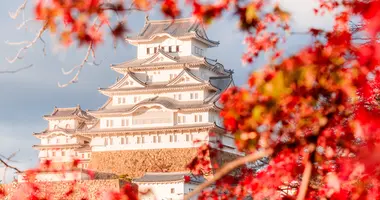
Autumn Leaves Photography Group Tours in Japan
- Duration : 12 days
- Locations : Tokyo, Mt Fuji (Kawaguchiko), Osaka, Himeji, Kyoto, Nara
- Included : English-speaking tour leader, 3* Hotels & Ryokan, Visits & meals
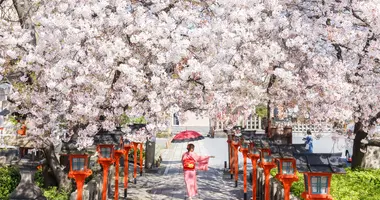
Cherry Blossoms Photography Group Tours in Japan
- Locations : Tokyo, Kyoto, Osaka, Nara, Kawaguchiko, Tokyo
- Included : English-speaking tour leader, 3*/4* Hotels & Ryokan, Visits & meals

Urban and Rural Japan Group Tours in Japan
- Duration : 21 days
- Locations : Tokyo, Hakone Mt Fuji, Kyoto, Nara, Koyasan, Osaka, Kobe, Takachiho, Kumamoto, Nagasaki, Hiroshima, Miyajima
Latest Articles
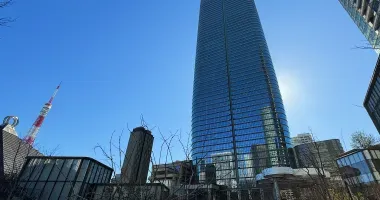
Azabudai Hills: Japan's tallest building blends commerce and culture
The newest addition to the Mori JP Development Project roster of skyscrapers in Tokyo, Azabudai Hills, stands as the current tallest building in Japan, only being eclipsed by Tokyo Skytre

Harry Potter studios in Tokyo
Follow in the footsteps of Harry Potter and explore the wonders of the wizarding world at the new Warner Bros. studios in Tokyo!

Sumida River Tokyo
The Sumida River is Tokyo's best known river and is a great place to see as visitors to the Japanese capital, offering numerous cruise options, and dotted with a medley of photogenic bridges.
All the themes of the city

Markets in Japan

Onsen, Hot Springs and Public Baths
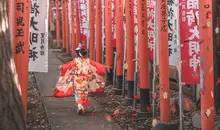
Family Travel

Nightlife in Japan: Going out, exploring and drinking

Temples and Shrines

Parks and Gardens

Outdoor Activities

Museums and Galleries

Restaurants and Cafes

Shopping and souvenirs
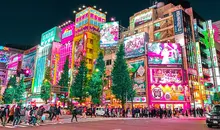
Japanese Pop Culture
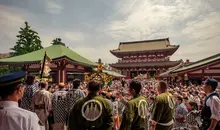
Events and Festivals
Please select your country on the list below:
- Switzerland
- United Kingdom
- Other countries
- Tours & Experiences
- Tailor-made Trips
- Bahasa Indonesia
We are happy to see you again!
Continue with
Or use email.
No Account? Create one
Create account
Already have an account? Sign in
Quickly Sign up with
I agree to Japan Travel's Terms of Service and Privacy Policy . Terms of--> and acknowledge that Japan Travel's Privacy--> applies to me.-->
Email reset password link
Please check your inbox and click the link we will send to you.
Tokyo Stock Exchange
Witness the Tokyo Stock Exchange and its museum

The Tokyo Stock Exchange is the third largest stock exchange in the world, but do not be fooled into thinking this is a hectic place like a scene out of the film The Wolf of Wall Street . Technology has changed how things operate here, with trading now being done online, making the building a calm but still very significant place for both the world and Japan. The building also has a museum, which provides a fantastic insight into the history of the Tokyo Stock Exchange, with excellent information, pictures and historic items on display.
One of the things that attracts many visitors is the Stock Trading Game, a simulation game which uses news and corporate information in a virtual market. The game lasts for 10 trading days, where you are given ¥10,000,000 to trade with. Unfortunately on the day that I visited the game room it was reserved for a Japanese group only, so I had to make do with a computer outside. It was still good, but I imagine being in the actual room is a lot better, given the fact you have a keyboard and should be able to quickly type in how many shares you wish to buy or sell, as opposed to clicking through with a mouse which takes up valuable time. I say "valuable" because things change remarkably quickly; one second the shares are up and the next they can plummet, making the speed of a decision a paramount of importance.
As you can see from one of my pictures I didn't exactly do well. Who wants to wire me some money so I can play this game in real life?
Visits to the Tokyo Stock Exchange are free and available Monday to Friday, from 9am - 16:30pm, with last entries at 16:00pm. You can visit the Visit TSE section of the website for more details such as guided English tour availability and Stock Trading Game availability. The closest station is Kayabacho Station, around a 5 minute walk away.
- Share on Facebook
- Share on Twitter
- Copy link to share
By Daniel Vesey
Community writer
Leave a comment
Explore nearby.

Doburoku Matsuri
By Jessica Lin

Kayabacho Tokyo Metro

Tokyo Kite Museum
By Karen Zheng

By Japan Travel
Information
2-1 Nihonbashi Kabutocho, Chuo-ku 103-0026, Tokyo Prefecture ( Directions )
Book your trip
Find a nearby hotel, top articles.
- Recommended

2024 Grand Sumo Tournaments

Tokyo One of the World's Most Walkable Cities

Haneda Airport Ranked World's Cleanest

Kurobe Unazuki Canyon Route to Link with Tateyama Kurobe Alpine Route

Sapporo Beer Opens New Brewery in Tokyo’s Ebisu

Guide to Golden Week

Tokyo Takes 2nd Place on Top Coffee Cities List

Anime Museums in Tokyo

Mount Omuro

Valley of Witches: a New Ghibli Park Attraction

Guide to Bringing Medicines Into Japan

Your Name: Real-Life Locations in Tokyo

Hachiko Statue in Shibuya

Japanese Urban Legends

Iwatayama Monkey Park

Shibuya Crossing

Daikoku Car Meet

Guide to Suica Cards

Sanja Matsuri
Let us know how we can help.
Help us improve JapanTravel.com
We welcome any suggestions regarding this content. Your feedback is confidential and will be used to help improve this page.
Suggest an edit
https://en.japantravel.com/tokyo/tokyo-stock-exchange/21554
Thank you for your support!
Your feedback has been sent.
- Search Search Please fill out this field.
- International Markets
Tokyo Stock Exchange (TSE): Definition, History, How It Works
James Chen, CMT is an expert trader, investment adviser, and global market strategist.
:max_bytes(150000):strip_icc():format(webp)/photo__james_chen-5bfc26144cedfd0026c00af8.jpeg)
What Is the Tokyo Stock Exchange (TSE)?
The Tokyo Stock Exchange (TSE) is the largest stock exchange in Japan, headquartered in its capital city of Tokyo. The Tokyo Stock Exchange was established on May 15, 1878. As of Sept. 14, 2021, the exchange had 3,784 listed companies. The TSE is run by the Japan Exchange Group and is home to the largest and best-known Japanese giants with a global presence—including Toyota, Honda, and Mitsubishi.
In addition, the TSE offers specific trading information, real-time and historical index quotes, market statistics, and information about and from specialists . Notably, the acronym TSE for the Tokyo Stock Exchange should not be confused with Canada's Toronto Stock Exchange , which is known by the acronym TSX.
Key Takeaways
- The Tokyo Stock Exchange (TSE) is the largest stock exchange in Japan, listing 3,784 companies (as of Sept. 2021).
- From 1991 to 2001, the TSE shrank dramatically as the Japanese economy contracted after the country's equity and real estate bubbles burst.
- The TSE lists the largest companies in Japan, including Toyota, Softbank, Keyence Corporation, Sony Corporation, and Chugai Pharmaceutical.
- The TSE is comprised of five sections; the first two sections are called the "Main Market" and include large cap and medium cap companies.
- Two sections are reserved for startup companies and the last section of the TSE is for professional investors only.
Understanding the Tokyo Stock Exchange (TSE)
At the peak of the Japanese asset price bubble in Dec. 1989, the Nikkei 225 index reached a record high of 38,916. Following this, the TSE's combined market capitalization shrank dramatically over the next two decades, as the Japanese economy struggled with a recessionary environment and the Nikkei plunged in value.
As of Sept. 2021, the board members of the Tokyo Stock Exchange are Director (Chairperson of the Board) Tsuda Hiroki; Director & Representative Executive Officer, Group CEO Kiyota Akira; Director & Representative Executive Officer, Group COO Yamaji Hiromi; and Directors Iwanaga Moriyuki and Shizuka Masaki.
The five largest stocks by market capitalization listed on the Tokyo Stock Exchange as of the end of July 2021 were (in 100 millions of Japanese yen):
- Toyota Motor Corporation (¥319,936).
- Keyence Corporation (¥147,724).
- Sony Group Corporation (¥143,445).
- SoftBank Group Corp. (¥117,798).
- Recruit Holdings Co. (¥95,465).
When the Tokyo Stock Exchange (TSE) first opened in 1878, some of its first customers were former samurai, who needed a market to trade bonds that had been issued to them by the government.
Other Major International Exchanges
In addition to the Tokyo Stock Exchange, other major trading exchanges worldwide include the New York Stock Exchange (NYSE), the Nasdaq, and the London Stock Exchange (LSE). Each exchange has specific listing requirements that owners must meet prior to offering their securities for trading.
In general, these requirements include regular financial reports, such as audited earning reports, and minimum capital requirements . For example, the NYSE has a key listing requirement that stipulates a company must have at least 1.1 million publicly traded shares of stock with a stock price of at least $4 per share. The company must have an aggregate pre-tax income of $10 million for the previous three fiscal years, with at least $2 million in each of the most recent two fiscal years. Nasdaq requires listers to meet aggregate pre-tax income in the prior three fiscal years of at least $11 million and a minimum bid price of $4.
Criticism of the Tokyo Stock Exchange (TSE)
Some market participants have complained that over the years the TSE has become too large and complicated compared to other global exchanges. The TSE consists of five sections. The first section lists Japan's biggest companies and the second section lists medium-sized companies. Combined, these two sections are called the "main markets."
Then there are two sections dedicated to startups . These sections are called the "Mothers" (Market of the High-Growth and Emerging Stocks) and the Jasdaq (which is separated further into standard and growth sub-sections). The final section is the Tokyo Pro Market, which is for professional investors only.
To complicate matters, each of these TSE sections has its own listing requirements. As of Sept. 14, 2021, the first section alone included about 2,190 companies, almost double the level from 1990. A plan to reform the TSE includes simplifying the criteria separating the sections and reducing the number of sections to three—Prime, Standard, and Growth. Another possible change includes increasing the market cap requirement to reduce the number of companies listed in the top tier.
Japan Exchange Group. " Number of Listed Companies/Shares ." Accessed Sept. 14, 2021.
Macrotrends. " Nikkei 225 Index—67 Year Historical Chart ." Accessed Sept. 14, 2021.
Japan Exchange Group. " Board of Directors and Executive Officers ." Accessed Sept. 14, 2021.
Japan Exchange Group. " Ranking of Stocks by Market Capitalization (As of End of July 2021) ," Page 1. Accessed Sept. 14, 2021.
New York Stock Exchange. " Overview of NYSE Quantitative Initial Listing Standards ," Page 2. Accessed Sept. 14, 2021.
Nasdaq. " Initial Listing Guide ," Page 6. Accessed Sept. 14, 2021.
Japan Exchange Group. " Overview of IPO ." Accessed Sept. 14, 2021.
Japan Exchange Group. " Number of Listed Companies ," Page 1. Accessed Sept. 14, 2021.
:max_bytes(150000):strip_icc():format(webp)/tokyo-skyline-at-sunrise-1081645512-7bd9c033abed4da19d1c1d53c8d7b61f.jpg)
- Terms of Service
- Editorial Policy
- Privacy Policy
- Your Privacy Choices

- Tokyo Stock Exchange
Founded in 1878, the Tokyo Stock Exchange (TSE) originally functioned as a venue where ex-samurai could exchange bonds issued by the government. As it evolved, the focus of the TSE transitioned to stock trading, and by the 1920s, this became its dominant activity.
Throughout its history, spanning several decades, it has experienced significant fluctuations—from suspending operations during World War II to emerging as the largest securities exchange globally by the late 1980s.
In contemporary times, Tokyo Stock Exchange operates as a publicly traded entity under Tokyo Stock Exchange, Inc., maintaining an essential position within Japan’s financial framework. It’s a very interesting exchange due to the number of listings there, which is very high.
As Japan’s principal stock exchange and one of the top five in the world by market capitalization, the Tokyo Stock Exchange is a financial leviathan that underpins the nation’s economy and draws global traders.
This article will explore the fundamental operations of the TSE, its trading hours, key listed companies, and its storied history to give you a comprehensive understanding of this powerful economic engine that rose from the ashes after WWII to get a dominant position for capitalists.
Table of contents:
Key Takeaways
- The Tokyo Stock Exchange (TSE) is Japan’s largest stock exchange, showcasing an extensive list of 3,784 (as of today) companies including top corporations like Toyota, and is divided into five sections for various company sizes and investor types.
- Several indices, such as TOPIX and Nikkei 225, provide benchmarks for the Japanese equity market, and the TSE employs a ‘T+2’ settlement cycle and an ‘arrowhead’ platform for high-speed trading to remain competitive.
- Technological advancements at TSE include transitioning from floor trading to electronic systems and the ToSTNeT off-auction trading system, with a focus on enhancing transaction speed, efficiency, and global accessibility for investors.
- Several international brokers give access to TSE, for example, Interactive Brokers.
What is the Tokyo Stock Exchange?

Situated in Tokyo, the Tokyo Stock Exchange (TSE) is Japan’s premier stock exchange and boasts an impressive roster of 3,784 companies listed as of September 2021. The number of listed companies has always been high, so you can expect many to choose from.
It falls under the auspices of the Japan Exchange Group and is home to revered Japanese entities such as Toyota, Honda, and Mitsubishi. The structure of this exchange comprises five distinct sections that are tailored to accommodate businesses at various sizes and growth phases. Two segments cater specifically to burgeoning startups while another is solely for well-versed professional investors.
Among its notable offerings are two indices (TOPIX and Nikkei 225) which act as key barometers for tracking the trends within Japanese equity markets by reflecting changes in performance among their listed entities.
In terms of transactional framework, TSE adheres to a “T+2” settlement cycle where trades need settling no later than two business days post-execution date. With ambitions towards bolstering its stature on an international stage amongst trading platforms, TSE has rolled out ‘arrowhead’, a system engineered for facilitating ultra-fast trading activities.
How did the Tokyo Stock Exchange start?
The Tokyo Stock Exchange (TSE) was established on May 15, 1878, under the guidance of then Finance Minister Kuma Shigenobu and business magnate Shibusawa Eiichi. Originally, the exchange’s primary dealings were in government bonds along with gold and silver currency transactions that predominantly served ex-samurai who had been provided with government bonds.
As it developed, the TSE expanded into five distinct divisions to accommodate various segments within the market. Despite this growth, there have been periods of struggle. Notably from 1991 to 2001, when Japan’s asset price bubble collapsed, led to a significant reduction in the market capitalization for stocks on the exchange. Even three decades after the bubble burst, the N225 is struggling to reach all-time highs, not considering reinvested dividends, though.
When was the Tokyo Stock Exchange founded?
Tokyo Stock Exchange was founded on the 15th of May, 1878. The Tokyo Stock Exchange (TSE) marked a pivotal point for Japan’s economic development and growth as it embarked on becoming a key financial institution.
Originally established to cater to ex-samurais’ financial needs, the inception of TSE signaled a significant transformation within Japan’s monetary environment, eventually leading it to rise as an influential player in global finance.
Who owns the Tokyo Stock Exchange?
The Tokyo Stock Exchange (TSE) is owned by Tokyo Stock Exchange, Inc., a dedicated entity under the leadership of President & CEO Iwanaga Moriyuki.
Established on April 1, 1949, with a registered capital of 11.5 billion yen and two million three hundred thousand shares issued to date, this key financial institution supports various market operations. These include facilitating trading platforms for securities transactions, publishing trading prices and data, and maintaining integrity within securities dealings. Managing the exchange for financial instruments as well as engaging in ancillary activities such as forming partnerships with other exchanges like the York Stock Exchange.
How does the Tokyo Stock Exchange work?

The Tokyo Stock Exchange (TSE) works and operates through a structured system divided into five distinct sections.
- The “Main Market,” which serves companies of large and medium size in terms of market capitalization.
- The “Mothers” section, or Market of the High-Growth and Emerging Stocks, is tailored to emerging startup firms.
- Jasdaq, with separate divisions for standard enterprises and those experiencing growth.
- Tokyo Pro Market is a platform dedicated exclusively to professional investors.
Within these individual segments, unique listing prerequisites must be satisfied by businesses aspiring to join the exchange. This is particularly true for inclusion in the first section.
TSE leverages an off-auction transaction mechanism known as ToSTNeT (Tokyo Stock Exchange Trading NeTwork System) for its trading processes. This robust infrastructure accommodates an expanding volume of trades while distributing outcomes as actionable market information.
It facilitates various trade types such as single stock transactions, basket trading involving multiple securities simultaneously, end-of-day price-based trading activities along with off-auction buyback operations concerning own shares plus distribution outside traditional auction settings.
What is the purpose of the Tokyo Stock Exchange (TSE)?
The purpose of Tokyo Stock Exchange (TSE) performs a dual function of providing an environment that allows companies, including some of Japan’s leading firms, to access the public equity markets for funding, and to facilitate trading in the secondary market. Such capital is instrumental in financing several business operations that drive economic development, such as research and development or expansion initiatives.
The TSE acts as a hub where various financial products can be traded by providing essential data like real-time and historical index values along with market statistics.
This arrangement enhances the investment landscape for both private investors and large institutions alike by fostering liquidity and aiding in establishing accurate prices within the market.
Who created the Tokyo Stock Exchange?
The Tokyo Stock Exchange (TSE) was created in 1878 as the Tokyo Kabushiki Torihikijo, or Tokyo Stock Exchange in English. Its creation was primarily driven by a consortium of Japanese business leaders, financiers, and government officials aiming to provide a centralized marketplace for trading securities and promoting investment in Japan’s burgeoning industrial economy during the Meiji era. The TSE has since evolved into one of the world’s largest and most influential stock exchanges, playing a pivotal role in Japan’s economic development and serving as a key platform for domestic and international investors to participate in the country’s financial markets.
What are the trading hours on the Tokyo Stock Exchange?
Trading hours on the Tokyo Stock Exchange are typically from 9:00 AM to 3:00 PM local time, Monday to Friday. The TSE operates on a weekly timetable from Monday through Friday, starting trading at 9:00 am and ending the session at 3:00 pm Japan Standard Time (GMT+09:00). Trading pauses for a lunch recess between 11:30 am and 12:30 pm. The exchange is distinct in that it does not provide opportunities for trading before the market opens or after it closes.
Activity on the TSE ceases over weekends—Saturdays and Sundays—and remains closed on national holidays as well as other declared market holidays.
What are the biggest crashes on the Tokyo Stock Exchange?
The biggest crashes on the Tokyo Stock Exchange include:
- The 1987 Black Monday Crash
- The 1990 Nikkei Crash
- The 2008 Global Financial Crisis Crash
Every financial market has its periods of growth and decline, and the TSE is no exception. A notable low point was in 1992 when the bursting of Japan’s asset bubble led to a dramatic drop in the Nikkei index, slashing it nearly by half and precipitating a mild recession within Japan. Nikkei 225 is still struggling to reach new highs even today.
Below is a chart (log scale) showing the Nikkei 225 from 1960 until today.

As you can see, after the bubble burst in 1991, the Nikkei went down for over two decades before it finally turned and went up after 2010. However, the above chart is the cash value of the index, so any reinvested dividends are not included. Hence, the performance is better than indicated! Anyway, the chart proves how long it can take if a big bubble bursts.
In recent times, there have been significant downturns such as during the global financial crisis of 2008, which saw the Nikkei plummet close to 10%, and again in March 2020 when fears surrounding the COVID-19 pandemic prompted a substantial sell-off.
We backtested the N225, and since 1960, the Nikkei has dropped at least ten percent over ten days 159 times. It has dropped at least 20% over ten days eight times.
What is the history of on the Tokyo Stock Exchange?
The history of the Tokyo Stock Exchange dates back to 1878, when it was established as the Tokyo Kabushiki Torihikijo. It has since grown to become one of the largest stock exchanges in the world, playing a crucial role in the Japanese economy and global finance.
Established in 1878, the Tokyo Stock Exchange (TSE) has a storied past that initially saw it as a marketplace for former samurais to trade government bonds. As time went on, the exchange expanded and developed five distinct sections designed for companies of different sizes and at various stages in their growth.
Over several decades, TSE’s prominence grew steadily. By the 1920s, stock trading came into vogue there, and after World War II, its importance eclipsed that of the Saka Stock Exchange. By late in the 20th century, TSE was conducting over 90 percent of all securities transactions across Japan.
Yet this progress wasn’t without its share of trials. From 1991 until approximately ten years later – following bursts within Japan’s equity and real estate sectors – TSE witnessed significant declines in market capitalization.
These hurdles were surmounted due to the persistent nature of TSE which constantly adjusted itself to address shifting market demands with perseverance even during tough times.
Innovations like transitioning from floor-based systems toward electronic platforms have marked technological leaps forward while structural amendments sought out improved efficiency within operations — collectively bearing witness to both endurance and continual transformation securing an indelible mark on financial markets worldwide.
Can tourists visit the Tokyo Stock Exchange (TSE)?
Yes, tourists visit the Tokyo Stock Exchange. The Tokyo Stock Exchange (TSE) opens its doors to visitors. The TSE’s visitor facility, known as TSE Arrows, operates between 9:00 am and 4:30 pm for self-guided tours without the need for prior booking, though it is closed on Saturdays, Sundays, and public holidays. For groups comprising 10 individuals or more who desire a guided tour experience at the exchange, they must make a reservation in advance.
To this service offering, the stock exchange venue in Tokyo includes an observation area that provides guests with a view of the trading floor dynamics and ongoing market activities. There is also a museum within premises where tourists can immerse themselves in learning about both historical elements and current operational aspects related to one of Japan’s paramount financial institutions – The Tokyo Stock Exchange.
Does the Tokyo Stock Exchange have holidays?
Tokyo Stock Exchange has many holidays annually, like other enterprises and countries. The exchange remains closed on weekends, national festivities, as well as supplementary occasions including the 2nd and 3rd of January following New Year’s Day, plus December 31st.
Celebratory days such as Vernal Equinox Day, Showa Day, Constitution Memorial Day, Greenery Day and Children’s Day are among those observed by the TSE.
If a national holiday lands on Sunday at any point in time during the year (for instance), it is customary for the TSE to defer its commemoration to Monday immediately following that Sunday.
What was the first company traded on the Tokyo Stock Exchange?
The first company to be traded on the Tokyo Stock Exchange was the “Tokyo Kabushiki Torihikijo,” which began operations in May 1878. It was the inaugural listed entity on the exchange, marking the beginning of organized securities trading in Japan. This historical milestone laid the foundation for the development and evolution of Japan’s financial markets over the following decades.
What is Japan’s main stock index?
Japan’s main stock index is the Nikkei 225 Stock Average (N225), which aggregates the performance of Japan’s foremost 225 blue-chip companies on the Tokyo Stock Exchange. Initiated in September 1950 and calculated retrospectively to May 1949, it stands as Asia’s most longstanding stock index.
As a capitalization-weighted index, it mirrors the dynamism of companies listed on exchanges and acts as an indispensable barometer for Japan’s equity markets.
How does the Tokyo Stock Exchange compare to other major stock exchanges globally in terms of market capitalization?
In terms of market capitalization, the Tokyo Stock Exchange compares favorably with other major stock exchanges globally, such as the New York Stock Exchange (NYSE) and the NASDAQ.
The Tokyo Stock Exchange (TSE) is prominent among the giants of global stock exchanges in terms of market capitalization. By today, it had reclaimed its status as Asia’s premier stock exchange based on market cap, outperforming the Shanghai Stock Exchange.
Regarding global rankings for 2023, the TSE comes in fifth among leading stock exchanges by market capitalization with an estimated value around $6.54 trillion USD.
Can foreign investors easily participate in trading on the Tokyo Stock Exchange?
Foreign investors can engage in trading on the TSE, easily via foreign brokers. This exchange permits the trading of foreign stocks using the Japanese yen, which avoids the need for currency conversion and related banking fees. With a modest initial investment starting from as little as JPY 100,000, investors can invest in these foreign equities listed on the TSE.
Numerous international brokerage firms extend services enabling overseas investors to trade stocks from Japan, especially those on the TSE. There is another option for such investors seeking involvement with Japanese market indices without directly purchasing Japanese shares: investing in ETFs that mirror these indices can provide exposure similar to direct stock investments on the TSE.
Interactive Brokers offers trading in Japanese stocks, and commissions are going down. You can also buy ADRs on the US exchanges, but many of the smaller companies only on the OTC market.

What role does the Tokyo Stock Exchange play in Japan’s economy?
The Tokyo Stock Exchange’s role is to serve as a crucial hub for capital formation and investment in Japan’s economy.
The Tokyo Stock Exchange (TSE) bolsters Japan’s economy. It offers a vital stage for major Japanese companies to garner capital from public equity markets, thus supporting corporate endeavors that drive economic expansion. By acting as an exchange where numerous financial instruments can be traded, the TSE stimulates investment into these companies, which fuels spending and investment within the nation’s economy.
As an emblematic gauge of Japan’s economic vigor and breadth, the TSE’s market capitalization mirrors its listed entities’ aggregate value.
How has the Tokyo Stock Exchange evolved technologically over the years?
The Tokyo Stock Exchange has evolved technologically over the years by adopting advanced trading systems, implementing electronic trading platforms, and enhancing connectivity for faster and more efficient transactions.
A commitment to technological innovation is at the core of TSE’s progress. Japan is a very innovative country. The market moved away from traditional floor trading and adopted electronic systems, which enhanced both the speed and effectiveness of transactions. To increase its global market competitiveness, it launched ‘arrowhead,’ a platform tailored for high-speed trading.
In 2017, there was a substantial enhancement to the off-auction trading system known as ToSTNeT. This upgrade augmented both processing capacities and ease of use for participants in the exchange.
Are there any unique features or trading practices specific to the Tokyo Stock Exchange (TSE)?
The TSE distinguishes itself in the market with a distinctive trading methodology called “Itayose,” which is a call auction system employed to establish opening and closing prices. In this process:
- Exchange personnel announce an initial tentative price.
- Participants on the trading floor put forward their orders.
- The provisional price is systematically revised according to these orders until every trade has been executed.
Within Itayose, market transactions are organized by the sequence in which they were received, ensuring execution adheres to both pricing and chronological precedence.
What are some notable companies listed on the Tokyo Stock Exchange?

Some notable companies listed on the Tokyo Stock Exchange are Toyota, Sony, and SoftBank Group are present there, along with vital contributors to sectors such as Mitsubishi UFJ Financial, Keyence, Fast Retailing, and Tokyo Electron.
The biggest companies today are these:
- Mitsubishi UFJ Financial
- Tokyo Electron
- Fast Retailing
- Mitsubishi Corporation
- Shin-Etsu Chemical
Japan is famous for its cross-ownership, where many companies own shares of one another, something which is not very shareholder friendly. They have also many conglomerates.
How does the Tokyo Stock Exchange contribute to Japan’s reputation as a global financial hub?
The Tokyo Stock Exchange (TSE) significantly enhances Japan’s position as a global financial hub. The Tokyo Stock Exchange contributes to Japan’s reputation as a global financial hub in its vast size, extensive market capitalization, and significant impact on worldwide financial markets.
With the highest aggregate market capitalization of shares that are listed among Asian stock exchanges, the TSE reinforces Japan’s status as a pivotal financial epicenter in Asia.
Are there any recent regulatory changes or developments affecting the Tokyo Stock Exchange?
Over the past few years, the Tokyo Stock Exchange (TSE) has made several regulatory adjustments and improvements. These changes encompass:
- Amendments to parts of the Securities Listing Regulations
- Improvements in monitoring activities within the market
- Modifications to trading regulations aimed at bolstering the effectiveness of cash equity markets
Such reforms demonstrate TSE’s dedication towards ensuring that its market operates with integrity, clarity, and efficiency.
What are some future plans for growth by the Tokyo Stock Exchange?
Here are some future plans for growth by the Tokyo Stock Exchange, including:
- Employing advanced generative AI technology to scrutinize the financial health and performance of stocks listed on the exchange using different forecasting indicators.
- Distributing these insights in a multitude of languages, with English prominently featured.
- Targeting an expansion in its base of international investors by removing obstacles presented by language differences.
- Becoming more shareholder-friendly by increasing the return on invested capital has been low for many decades.
Anticipated outcomes of this endeavor include heightened global recognition for Japanese firms as well as improvements in market efficiency.
Related Reading : Shanghai Stock Exchang e
Are there any cultural or historical landmarks associated with the Tokyo Stock Exchange’s location?
Yes, the Tokyo Stock Exchange is located in the Nihonbashi district of Tokyo, which is historically significant as the commercial center of Edo (old Tokyo) during the Tokugawa shogunate. Nihonbashi itself is a landmark, known for its historic bridge that served as a starting point for major roads leading to other parts of Japan. However, the specific location of the Tokyo Stock Exchange building doesn’t have significant cultural or historical landmarks directly associated with it.
Situated in the historically and culturally significant district of Nihonbashi in Tokyo, the TSE stands amid remarkable landmarks. The vicinity is adorned with an age-old train station pivotal as a transport nexus, an enchanting shrine that attracts numerous visitors, and a venerable elementary school structure contributing to the area’s antiquated aesthetic.
Nihonbashi is distinguished by the emblematic Nihonbashi Bridge, which has been an enduring representation of this locale since its inception in 1603.
What are some interesting facts about the architecture or design of the Tokyo Stock Exchange building?
The Tokyo Stock Exchange building features a modern design characterized by its sleek glass facade and striking steel framework. Its architectural layout emphasizes transparency and connectivity, symbolizing openness and accessibility in financial markets.
The structure housing the Tokyo Stock Exchange (TSE) is truly remarkable. Having opened its doors in 1899, this building captured attention with its distinctive aesthetic appeal that distinguished it from other nearby structures. Within these walls, one can find the TSE Historical Museum.
A place presumably dedicated to showcasing exhibits about Japan’s financial chronicles and the development of the exchange over time. A Museum Shop within the premises indicates that part of this architectural masterpiece is designed to include commercial space for those visiting.
Equally noteworthy is what could be referred to as the Market Center section – potentially functioning as either a hub where trading activities unfold or perhaps representing a vital core for market operations on site.
What is the main Japan Stock Exchange (TSE)?
The main Japan Stock Exchange is Tokyo Stock Exchange (TSE), and serves as Japan’s primary exchange for stocks.
Established as a Kabushiki gaisha or joint-stock company, this exchange tracks market performance through major indices, including the Nikkei 225 and TOPIX, which collectively represent the activity of companies listed on it.
How big is Tokyo Stock Exchange?
Tokyo Stock Exchange is big and has a market capitalization of 6.6 trillion USD (6.500 USD).
The Tokyo Stock Exchange (TSE) exhibits a towering presence with respect to market capitalization. By December 2023, the TSE’s market cap reached an enormous sum of 6,155.309 billion USD. Such a figure ranks it within the highest echelons worldwide as one of the top five largest stock exchanges by market capitalization.
As of April 2022, the TSE encompasses various segments in its marketplace structure: these are recognized as the Prime Market, Standard Market and Growth Market.
How many stock exchanges are there in Japan?
There are four major stock exchanges in Japan: the Tokyo Stock Exchange, the Tokyo Stock Exchange, and the Tokyo Stock Exchange.
- Osaka Exchange
- Nagoya Stock Exchange
- Fukuoka Stock Exchange
Additional platforms are connected to trading activities like JASDAQ and the Tokyo Pro Market.
Historically, numerous stock exchanges were operational in different cities across Japan. These merged into one unified Japanese Stock Exchange during World War II.
What are the 10 biggest companies on Tokyo Stock Exchange?
The ten biggest companies on the Tokyo Stock Exchange are these:
- NTT (Nippon Telegraph & Telephone)
Are there any foreign companies listed on the Tokyo Stock Exchange?
Yes, there are foreign companies listed on the Tokyo Stock Exchange. TSE has become a hub for numerous international firms.
Since 1973, it has facilitated the market activities of foreign stocks and enhanced its listing processes to draw in rapidly expanding Asian enterprises. The exchange hosts two types of overseas companies: those with global “Blue Chip” status and those exclusively listed on the TSE itself.
Since its establishment in 1878, the Tokyo Stock Exchange (TSE) has emerged as a formidable force within the global financial sector. It not only plays a significant role within Japan, but also considerably influences worldwide economic movements and fiscal strategies.
The TSE is recognized for fostering diverse market sections, pioneering trading methods, and perpetually embracing technological innovation—factors driving its ongoing evolution and bolstering Japan’s international finance center standing. Looking to the future, it continues to be an essential venue where companies can access capital while offering investors robust opportunities for trading across various financial instruments—all underlining Japan’s vibrant economic strength to global observers.
Frequently Asked Questions
What is tokyo stock exchange called.
Tokyo Stock Exchange is commonly referred to as “TSE.”
The TSE or Tokyo Stock Exchange stands as Japan’s largest stock exchange.
Can Americans invest in the Tokyo Stock Exchange?
Americans are unable to invest directly in the Tokyo Stock Exchange. They can acquire exposure by purchasing shares of an ETF that follows the Nikkei 225 index or by investing in Japanese stocks via international brokerages with offerings of Japanese equities.
Is Tokyo Stock Exchange open now?
Tokyo Stock Exchange is open from Monday through Friday, starting trading at 9:00 am and ending the session at 3:00 pm Japan Standard Time (GMT+09:00). Trading pauses for a lunch recess between 11:30 am and 12:30 pm.
What major crashes has the TSE experienced?
Including notable crashes on the TSE like Black Monday in 1987, the financial crisis that swept across the globe in 2008, and March 2020’s sharp sell-off triggered by concerns surrounding the COVID-19 pandemic.
Such occurrences have left a substantial mark on trading activities within the market.
How does the TSE contribute to Japan’s reputation as a global financial hub?
The Tokyo Stock Exchange (TSE) enhances Japan’s global financial hub status by providing a platform for international investors to access Asia’s second-largest economy, fostering liquidity, and showcasing Japan’s advanced financial infrastructure.
Similar Posts
Oslo børs: norway’s stock exchange.
Discover how Oslo Børs facilitates trading and investment in Norway, with focus areas like energy, shipping, and seafood. Understand the exchange’s structure, investment possibilities, and trading regulations in this article created for potential investors and financial market enthusiasts. Key Takeaways…
Bovespa: Brazil’s Stock Market Index
We discuss why this index is pivotal and what it aims to achieve. Trading times are specified alongside a breakdown of how investing works within this context. This article serves as an informative resource for prospective investors or anyone seeking…
B3 Brasil Bolsa Balcão: Brazil’s Stock Market Exchange
B3 Brasil Bolsa Balcão, Brazil’s foremost stock exchange, is not just pivotal for trading securities; it is an economic force driving the country’s growth. This exchange provides an essential platform for buying and selling equities, derivatives, and other financial assets,…
TLT: Guide To The iShares 20+ Years Treasury Bond ETF
Looking to invest in long-term government bonds? The iShares 20+ Year Treasury Bond ETF, known as TLT, offers a straightforward way to gain exposure. This article unpacks TLT’s role in the ETF marketplace, its mechanisms for tracking the ICE U.S….
World’s Smallest Stock Exchanges
Small in scale but significant in function, this article cuts to the chase, ranking the World’s Smallest Stock Exchanges and examining their roles in their domestic markets. Dive in to find out which marketplaces, despite their modest size, are key…
Dow Jones Market Cap Comparison: Which Are The Biggest Companies? (Statistics, Facts, Video)
Dow Jones Stocks Market Capitalization: Have you ever wondered which companies are the biggest in the Dow Jones Industrial Average? The biggest company in Dow Jones ranked on market capitalization is Apple, in second place is Microsoft, and third is Visa. …
Session expired
Please log in again. The login page will open in a new tab. After logging in you can close it and return to this page.
Tokyo Stock Exchange

Top ways to experience nearby attractions

Most Recent: Reviews ordered by most recent publish date in descending order.
Detailed Reviews: Reviews ordered by recency and descriptiveness of user-identified themes such as wait time, length of visit, general tips, and location information.

Also popular with travelers
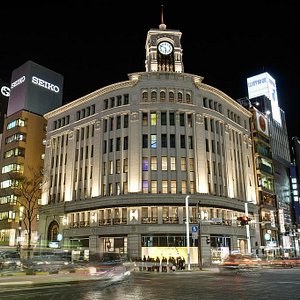
Tokyo Stock Exchange - All You Need to Know BEFORE You Go (2024)
- Mon - Fri 8:45 AM - 4:45 PM
- (0.08 mi) Hotel K5
- (0.13 mi) Sotetsu Fresa Inn Nihombashi-Kayabacho
- (0.09 mi) Hotel Livemax Nihonbashi Koamicho
- (0.12 mi) Keio Presso Inn Nihonbashi Kayabacho
- (0.13 mi) Toyoko Inn Tokyo Nihombashi Ningyocho
- (0.03 mi) Neki
- (0.03 mi) Asahina Gastronome
- (0.03 mi) Trattoria L'Acero
- (0.09 mi) Kiyokawa
- (0.08 mi) Soba Takane Nihombashi Kayabacho
- Get 7 Days Free
How the Tokyo Stock Exchange Is Pushing for Better Shareholder Returns
It’s a new chapter for balance-sheet reform.

On this episode of The Long View , Carl Vine, co-head of Asian Investment for M&G, talks the Japanese equity market, structural issues, and investing policy.
Here are a few excerpts from Vine’s conversation with Morningstar’s Christine Benz and Dan Lefkovitz :
How the Tokyo Stock Exchange Is Pushing for Better Capital Allocation
Christine Benz : We wanted to ask about policies related to investing in Japan. Tokyo Stock Exchange has really pushed for better capital allocation with an eye toward improving shareholder returns. They’re focused on price/book. Can you talk about that whole effort and how big a factor it is?
Carl Vine : You’ve really hit on what I think is a very important aspect of the rally in Japan that we’ve seen in the last year and a half. I think the anatomy of that rally, I feel, was started in late December ‘22 when the Bank of Japan finally came out and said, look, we might be thinking about changing interest rates. Obviously, it then took them another 15 months. But the cat was out of the bag then that they may be winning this long-term fight against inflation. And then obviously Warren Buffett became a bit more vocal in early ‘23.
But then around the same time as Buffett, we had Yamaji (Sama) of the Tokyo Stock Exchange come out and do something, which I think honestly is quite extraordinary in some sort of global context. So, the head of the stock exchange came out and very publicly said, any company that’s got a price/book ratio—not my favorite metric as it happens, but anyway—any company that’s got a price/book ratio of less than one—so about half the stock market at that point—you need to write me a letter of apology. I’m paraphrasing a little bit here and being a bit flippant. But that is what he said, I want you to write Tokyo Stock Exchange and tell us what you’re going to do about it. And his message, the message that was then given with more nuance across TV interviews and radio interviews and podcasts and so on, was you need to make a decision whether you want to be listed on my stock exchange or not. If you want to be on my stock exchange, you need to understand your cost of capital, both what it should be and what you need to do to earn at least that cost of capital. And I want you to write that to me and my team at the Tokyo Stock Exchange and then we’re going to make that information public. And then in a year’s time, which is now about seven weeks ago, I’m going to name the companies that have not yet written that letter and I’m going to do this all publicly. So, we’re going to get into the shame motivation. They gave them one year to get it done, then he said, I’m going to name and shame.
So pretty radical for the head of a stock exchange to take that level of stance and to be supported. It’s not like the Cabinet Office didn’t leak out messages that he was overstepping the mark. He was well supported. Nobody held him back whatsoever. So, I think for me as an investor, particularly with our engagement orientation, where we’ve been trying for a long time to build an investment program that tries to help companies on their journey of self-improvement. This has made my job so much easier actually, because it’s not just a foreign investor that’s turning up and telling you to do various things with your balance sheet. You’ve now got the head of the stock exchange saying, if you don’t understand your cost of capital, go and find out. And if you don’t want to do that, fine, you can delist. And being listed in Japan is quite prestigious. So, we’ve seen a response. We’ve definitely seen a response. We’ve seen a response from investors. Investors took that pressure very positively. The only game in town in 2023 in terms of intramarket behavior, frankly, was—well, there were two. There were semiconductors, but then really the big game was low price/book stocks. They all outperformed indiscriminately, I should say. But a pretty amazing aspect of what we’re seeing in Japan now is this state-coordinated sponsorship of really trying to cajole the corporate sector to improve returns on invested capital. There’s not that many times in history where I’ve seen such a top-down focus on that.
Has There Been a Reduction of Companies That Trade Below Price/Book?
Dan Lefkovitz : That’s fascinating. Have you seen a meaningful reduction in the number of companies that trade below price/book? I’m curious what you’re seeing in terms of capital allocation and how companies are using profits for dividends versus share buybacks versus reinvestment.
Vine : I’d say the changes that we’ve seen in the last year, it didn’t just start a year ago. This really did start, as I said, in the 2011-12 period when Abe came out and said, we’re going to do things differently, the social contract is going to change. We’ve seen over a decade of growth in dividends, growth in earnings. Compound earnings growth has been about 8%, 9% in Japan over the last decade. It’s pretty impressive for an economy that’s been bereft of any growth. And it’s not overly blessed in the technology sector like the US. So that’s been some pretty impressive, very broadly spread earnings growth. We’ve had dividends growing more. So, I think dividends have probably compounded, I think almost about 12%, something in that region for over a decade now. Payout ratios are still pretty low, about 40% in Japan. Lots of scope for further increases in dividends. Every year, for as many years I can remember we’ve had successive increases in buybacks. So yeah, Japan is getting religion about more efficient deployment of capital.
That’s an old story. And I think the Japanese equity story, some people are just fatigued with it. They say, I’ve been hearing about Japanese restructuring calls for 20 years. And I have some sympathy for that. It has been going on for a long time. But you haven’t seen for 20 years the types of changes that you’re seeing now. So, the fact that it’s an old story doesn’t mean to say that it’s a story you should ignore. The facts are bearing out that something very big is happening. I think we’re entering a new chapter now of the balance-sheet reform, which is before it was more at the edges, we’ll do a few buybacks, we’ll nudge up the payout ratio. I think we’re now seeing examples of companies saying, “Actually, I’ll go from a 30% payout ratio to an 80% because it’s the appropriate thing to do.” We’re seeing less incremental change and we’re seeing changes more driven by first-principle thinking rather than let’s just do a bit more than we did last year. So, we’re seeing some more radical changes.
We’re also seeing the concept of the best owner, the best owner concept in corporate finance. Let’s say, I’ve got five divisions and I think I’m the best owner of these two divisions, but those three would probably be more competitive if they were part of another company. Simple concept, but it’s never really been pervasive in the thinking of boards of directors in Japan. That’s totally changed. Every company we speak to now that’s got more than one business line, which is most of Japan—a lot of diversification in the corporate sector—they’re all figuring out, actually, we’re going to focus on these two or three things where we’ve got global competitiveness and these two or three things we’re going to go and find out who else this business needs to live with. That corporate re-optimization is releasing massive corporate value across Japan. And I think it will be a multiyear trend. That won’t happen overnight.
The author or authors do not own shares in any securities mentioned in this article. Find out about Morningstar’s editorial policies .
More in Markets
/cloudfront-us-east-1.images.arcpublishing.com/morningstar/TNJY62P2RRG2PP5MMRLA5IZXYY.png)
After Earnings, Is Coinbase Stock a Buy, a Sell, or Fairly Valued?
/cloudfront-us-east-1.images.arcpublishing.com/morningstar/KPHQX3TJC5FC7OEC653JZXLIVY.jpg)
After Earnings, Is Albemarle Stock a Buy, a Sell, or Fairly Valued?
/cloudfront-us-east-1.images.arcpublishing.com/morningstar/T5SLJLNMQRACFMJWTEWY5NEI4Y.jpg)
Is ServiceNow Stock a Buy After Earnings and Its Investor Day?
About the author.

Jessica Bebel
Jessica Bebel is an associate multimedia editor on Morningstar's editorial team. She works on content for a variety of audiences, focusing on the individual investor.
Bebel holds a bachelor's degree in biopsychology, cognition, and neuroscience from the University of Michigan.
Ed Slott: How Rules on Eligible Designated Beneficiaries Changed for Inherited IRAs
How much does wealth affect your well-being, can converting to a roth ira reduce future rmds, the role of market movements in your portfolio, how much investment is the right amount, ed slott: how to report rollovers the right way, how to set the international allocation in your portfolio, why the rise of index investing isn’t slowing down anytime soon, get out of your financial shame spiral, sponsor center.
Nikkei 225 Index
Bridgestone selected as global original equipment supplier for next-generation luxury suv, global thermal overload relays market 2018-2023 with profiles of major players - schneider electric, general electric company, rockwell automation, mitsubishi electric, larsen & toubro limited, sensage joins hitachi data systems isv partner program, toyota announces 2005 top supplier awards, mcafee(r) provides best-of-breed online security service for hitachi's, stocks nikkei 225, historical prices for nikkei 225, analyst opinions for nikkei 225, nikkei 225 key figures, biggest gainers, biggest losers.
The Nikkei 225 is the leading index for the Japanese stock exchange in Tokyo. It was published for the first time in its current form – with the prices calculated by the Nikkei business newspaper – in 1971. Prior to this, the Nikkei 225 had already been calculated directly by the Tokyo Stock Exchange and its prices were published retroactively back to the year 1949. The Nikkei consists of the shares of the 225 largest companies in Japan and represents their performance. For this reason, the Nikkei 225 and its performance are also regarded as an indicator for the entire Japanese share market. (read more)
Like the Swiss Market Index (SMI), the Nikkei 225 is a price index. The shares included in it are weighted according to price; the index level represents the average of the shares included in it. Dividend payments and stock market turnover are not considered when calculating the index.
The composition of the Nikkei 225 and the weighting of the shares included in it are reviewed once annually and adjusted when necessary. This responsibility falls to the Japanese business newspaper, Nihon Keizai Shimbun (Nikkei), which calculates and oversees the index.
The Nikkei 225 is traded and calculated on the Tokyo Stock Exchange each trading day between 1:00 am and 7:00 am CET.

About Tokyo Stock Exchange Tokyo Stock Exchange, Inc. (TSE) is a licensed financial instruments exchange under the Financial Instruments and Exchange Act of Japan, which is engaged in the provision of market facilities for trading of securities, publication of stock prices and quotations, ensuring fair trading of securities and other financial instruments, and other matters related to the operation of exchange financial instruments markets. In addition to providing market infrastructure and market data, Japan Exchange Group, Inc., and its subsidiaries also provide clearing and settlement services through a central counterparty and conducts trading oversight to maintain the integrity of the markets. In the course of working together as an exchange group to offer a comprehensive range of services, we continue to make every effort to ensure reliable markets and create greater convenience for all market users.
Category: NYSE ICE-CORP
NYSE Media Contact: Bridget Walsh [email protected] (212) 656-2298
ICE Investor Contact: Katia Gonzalez [email protected] (678) 981-3882
Tokyo Stock Exchange Contact: Japan Exchange Group, Inc. Global Strategy TEL: +81-3-3666-1361 (Operator)

How To Find the Best Japanese Stocks
Japan's stock market is soaring which has many investors wondering how to find the best Japanese stocks. We take a closer look here.
- Newsletter sign up Newsletter
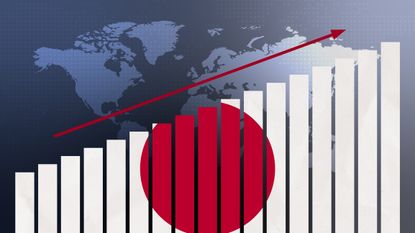
Every now and then, we will turn our attention from our own traditionally productive stock market to a foreign bourse that has suddenly caught fire.
More often than not, that stock market will be located in one of the world's emerging markets – China, India, Brazil, or other parts of the world enjoying the brisk economic growth that developing nations are known for.
But the searing-hot market capturing American investors' imaginations of late has been none other than … Japan?
Subscribe to Kiplinger’s Personal Finance
Be a smarter, better informed investor.

Sign up for Kiplinger’s Free E-Newsletters
Profit and prosper with the best of expert advice on investing, taxes, retirement, personal finance and more - straight to your e-mail.
Profit and prosper with the best of expert advice - straight to your e-mail.
That's right: The island nation that's still trying to recover from its "Lost Decades" of economic stagnation has seen its stock market take off in fits and starts.
And if that's piqued your curiosity about investing in the country's equities, read on. We'll discuss what you need to know about Japan's resurgent stock market, and what you should consider as you seek out the best Japanese stocks.
Why should I invest in the best Japanese stocks?
For those not familiar, Japan has spent most of the past 35 years mired in a long economic rut dubbed the Lost Decades. What started as both an economic and market bubble burst at the end of the 1980s and turned into more than three decades of mostly unchecked economic malaise and some of the deepest debt on the planet.
Japan's economy has finally started to turn the corner over the past couple of years, and that's what's driving the rally in Japanese stocks – of late. But those just discovering the country's equities should know that their main index, the Nikkei 225, has been in a sharp upturn for more than a decade.
The late 2012 election of Prime Minister Shinzō Abe, and his subsequent " Abenomics " plan, put a jolt into equities – even if it had limited effect on the economy. The Nikkei is up more than 280% since then, actually outperforming the S&P 500 by about 25 percentage points.
If investors weren't paying attention before, they are now. The Nikkei is up some 40% over the past year, versus a 27% gain for the S&P 500. In late February, the Nikkei notched a historic milestone, surpassing its previous high of 38,915.87 – a record that had held for 34 years. Since then, it has crossed 40,000.
What's driving the recent excitement?
For one, Goldman Sachs analysts call recent Tokyo Stock Exchange corporate governance reforms "a game changer."
"The stock exchange has incentivized listed companies to boost valuations and earnings, and companies could potentially be delisted if they're unable to show they're using their capital efficiently," Goldman says. "Investors see the unwinding of Japanese companies' cross-shareholdings – shares that firms own in their business partners to maintain those relationships – as an indication of improved governance."
Corporate earnings are improving and are forecast to improve in the year ahead. That's being helped somewhat by a weak yen, which is also helping Japanese stocks' value proposition to international investors.
Nikko Asset Management also sees reason for optimism in Japan's "decades-high implicit expenditure on software, typically a proxy for the type of spending corporates engage in when making honest attempts to increase the productivity of their businesses."
In the meantime, the economy, while hardly vibrant, has shown some life over the past couple of years amid a combination of aggressive fiscal and monetary policy and a lifting of COVID-19 restrictions.
Another factor driving interest in Japanese stocks is the recent media attention surrounding the stakes Warren Buffett 's Berkshire Hathaway ( BRK.B ) has built in a handful of Japanese businesses. In his annual letter to shareholders , Buffett said Berkshire's unrealized gain in dollars in these investments at the end of 2023 was $8 billion.
How to find the best Japanese stocks
Picking the best Japanese stocks is pretty similar to picking the best stocks to buy here at home. Japan has a strongly regulated stock market where listed companies are required to provide quarterly and annual financial reports. Thus, there's a wealth of available information about virtually any company you'd be interested in.
You'd evaluate Japanese stocks the same way you would evaluate U.S. stocks – by valuation, growth potential , balance sheet health, cash flow generation, and so on.
Really, when it comes to investing in Japanese equities, there's only one meaningful difference … but it's a pretty vital one that limits your choices.
That difference is access.
With a U.S. brokerage or retirement account, you typically can invest in any stocks or funds on all of the major U.S. exchanges (as well as over-the-counter, too). But they rarely provide access to foreign bourses – it's extremely unlikely that you could just type in a Tokyo Stock Exchange ticker and buy a few shares.
This means you're limited to Japanese companies that trade as American depositary receipts (ADRs) on either a major stock exchange or over the counter.
ADRs are certificates issued by a U.S. bank that represent stock of a foreign country – but they trade just like regular ol' U.S. stocks. ADRs must adhere to the requirements of whatever exchange they list on, so if they list with the New York Stock Exchange or Nasdaq , that communicates a higher level of accounting and transparency than might be required in their home markets.
Of course, the Tokyo Stock Exchange has thorough rules and regulations. So while over-the-counter stocks might normally be considered risky, Japanese stocks that trade on the TSE in Japan, but over-the-counter in the U.S., are quite safe. Consider that large and extremely well-known names including Nintendo ( NTDOY ), Nissan ( NSANY ) and Shiseido ( SSDOY ) all trade OTC. (Just make sure that they trade with sufficient volume; the three examples above are plenty liquid.)
And regardless of whether they trade on the NYSE, Nasdaq or OTC, if it trades as an ADR, its investor materials usually will be available in English – helpful to those of us who haven't brushed up on our Hiragana, Katakana and Kanji.
If you simply don't have time to research individual stocks or prefer to diversify your Japanese holdings, you can always consider broad-based Japanese exchange-traded funds ( ETFs ). Among the most popular are the iShares MSCI Japan ETF ( EWJ ), the currency-hedged WisdomTree Japan Hedged Equity Fund ( DXJ ) and the Franklin FTSE Japan ETF ( FLJP ).
Related content
- Warren Buffett Stocks: Analyzing The Berkshire Hathaway Portfolio
- The 30 Best Stocks of the Past 30 Years
- How to Find the Best International ETFs
To continue reading this article please register for free
This is different from signing in to your print subscription
Why am I seeing this? Find out more here
Kyle Woodley is the Editor-in-Chief of WealthUp , a site dedicated to improving the personal finances and financial literacy of people of all ages. He also writes the weekly The Weekend Tea newsletter, which covers both news and analysis about spending, saving, investing, the economy and more.
Kyle was previously the Senior Investing Editor for Kiplinger.com, and the Managing Editor for InvestorPlace.com before that. His work has appeared in several outlets, including Yahoo! Finance, MSN Money, Barchart, The Globe & Mail and the Nasdaq. He also has appeared as a guest on Fox Business Network and Money Radio, among other shows and podcasts, and he has been quoted in several outlets, including MarketWatch, Vice and Univision. He is a proud graduate of The Ohio State University, where he earned a BA in journalism.
You can check out his thoughts on the markets (and more) at @KyleWoodley .
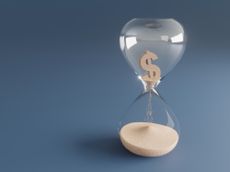
Tax Refunds Unclaimed tax refunds from 2020 are waiting for millions who might not know it. Are you one of them?
By Kelley R. Taylor Published 9 May 24

Celebrate Teacher Appreciation Week through May 10 with deals from Scholastic, Microsoft, AT&T, Verizon and more.
By Kathryn Pomroy Published 9 May 24

European stocks are cheaper than their U.S. counterparts and there are plenty of high-quality companies to choose from. Here's how to find them.
By Coryanne Hicks Published 8 May 24

The 30-stock index is on its longest winning streak of the year.
By Karee Venema Published 8 May 24

The Justice Department is investigating Tesla for potential securities and wire fraud, according to media reports.
By Joey Solitro Published 8 May 24

Uber Technologies reported an unexpected first-quarter loss, sending shares lower Wednesday. Here's what you need to know.

Reddit stock is higher after the company's impressive Q1 results and strong Q2 outlook. Here's what you need to know.

A sharp post-earnings selloff for Walt Disney stock kept a lid on the Dow Tuesday.
By Karee Venema Published 7 May 24

Datadog stock is down after beating expectations for its first quarter and raising its full-year outlook. Here's what you need to know.
By Joey Solitro Published 7 May 24

Palantir stock is falling after the company's full-year outlook fell short of expectations, but one analyst says you needn't worry. Here's what you need to know.
- Contact Future's experts
- Terms and Conditions
- Privacy Policy
- Cookie Policy
- Advertise with us
Kiplinger is part of Future plc, an international media group and leading digital publisher. Visit our corporate site . © Future US, Inc. Full 7th Floor, 130 West 42nd Street, New York, NY 10036.

Market News
Data & statistics, derivatives.
- Derivatives Indices
- Statistics (Equities)
- Statistics (Derivatives)
- Paid Information Services (Equities)
- Paid Information Services (Derivatives)
- Documents Available for Public Inspection
- JPX Data Catalog
- Data Sandboxing Program
- Trading Halts
- Alerts Regarding Unclear Information
- Equities Market Summary
- JGB Base Price
- ToSTNeT Trading Super-Large Lot Execution Information
- Off-Auction Distribution Information
- Off-Auction Own Share Repurchase Transaction Information
- Short Selling Regulation-Information
- Daily Publication, etc., Concerning Margin Trading
- Regulatory Measures, etc., Concerning Margin Trading
- Overseas Exchanges Information
- Information on Treatment of Rights
- Circuit Breaker Trigger Information
- Derivatives Quotes
- New/Additional Strike Prices
- Final Settlement Prices
- Option Theoretical Price, etc.
- Reference Data for Futures and Options
- Price Limits
- Today's Trading Overview
- Trading Volume by Trading Participant
- Open Interest by Trading Participant
- Reference Data for Flexible Futures and Options
- Options Calculator
- Option Chart (Securities Options)
- Commodity Derivatives Reference
- Indices Line-up
- JPX Prime 150 Index
- JPX-Nikkei400 / JPX-Nikkei Mid Small
- S&P/JPX Carbon Efficient Index
- FTSE JPX Net Zero Japan Index Series
- Stock Price Index - Real Time Values
- Related Data
- Index Revisions
- S&P/JPX JGB VIX Index
- JPX JGB Futures Index Series
- Nikkei-JPX Commodity Index
- Credit Default Swaps (CDS)
- Daily Report
- Monthly Statistics Report
- Monthly Quotations
- Outstanding Margin Trading , etc.
- Short Selling Value
- Trading by Type of Investors
- Program/Arbitrage Trading
- Other Statistics
- Other Reports
- Summary of Statistics
- Annual Quotations
- Real Time Market Data
- Reference Data
- Historical Data
- Listed Company-related Data
- Alternative Data
- Information on Outstanding Short Selling Positions
Listed Companies
- Company Announcements Service
Listed Company Search
- Corporate Governance Information Search
- Number of Listed Companies/Shares
- New Listings/ Transfers/ Delistings
- Market Alerts
- Measures against Listed Companies
- Other Information
- Earnings Announcements/ Annual General Shareholders Meetings
- Introduction of Listed Companies
- New Listings
- List of Segment Transferred Companies
- List of Delisted Companies
- Securities Under Supervision & Securities to Be Delisted
- Improvement Period
- Issues in a Grace Period pertaining to Delisting Criteria, etc.
- Public Announcement Measures
- Listing Agreement Violation Penalties
- Companies Requested to Submit Improvement Reports/Improvement Status Reports
- Securities on Special Alert
- Ex-dividend/Ex-rights
- List of Standardized/Loan Margin Trading Issues
- Extensions for Submission of Annual Securities Reports
- Adverse Opinions, Qualified Opinions, and Disclaimers of Opinion
- List of Companies That Meet the Conditions for a Mandatory Interim Review
- Scheduled Dates for Earnings Announcements
- Scheduled Dates for Annual General Shareholders Meetings of TSE listed companies
- TSE IR MOVIE SQUARE
- Top Executive Interviews "SOU"
- Recent IPOs of Companies with Links to Foreign Countries
Equities, Debt, Funds
- Listing on TSE
- Trading (Domestic Stocks)
- Listing (Domestic Stocks)
- Market Infrastructure for Listed Companies
- Support for Listed Companies
- Follow-up of Market Restructuring
- Strengthening the Functions of the Cash Equity Market
- Carbon Credit Market
- About Listing
- Segment Transfers
- TSE Asia Startup Hub
- Stocks (Domestic Stocks)
- Foreign Stocks
- Venture Funds
- Country Funds
- Infrastructure Funds
- Preferred Stocks, etc.
- Japanese Government Bonds
- Convertible Bonds
- Subscription Warrant Securities
- Preferred Equity Investment Securities
- TOKYO PRO Market
- TOKYO PRO-BOND Market
- Trading Rules of Domestic Stocks
- ToSTNeT Market
- Restrictions on Trading
- When-Issued Transaction
- Acquiring Own Company Shares through the TSE Market
- Canceling Executed Transactions
- Margin Trading
- Trading resumption through a system reboot
- Continued Listing Criteria
- Delisting Criteria
- Code of Corporate Conduct
- Enforcement Measures
- Timely Disclosure System
- Enhancing Corporate Governance
- Independent Directors/Auditors
- Reduction of Investment Unit / Mechanism and Effects of Share Split
- Listing Fees
- Improvements to TSE Listing System
- Standardization of Trading Units
- Establishment of Listing System for Class Shares with Voting Rights
- IFRS (International Financial Reporting Standards)
- Electronic Voting Platform, etc.
- Study Group on the SPAC Listing System
- Market Restructuring
- Study Group to review Minority Shareholder Protection and other Framework of Quasi-Controlled Listed Companies
- Council of Experts Concerning the Revision of the Quarterly Disclosure System
- Listed Company Award
- Seminars and Training
- Disclosure Forms and Documents to be Submitted
- JPX English Disclosure GATE
- Overview of Specifications
- Market Participants
- Overview of Futures Trading
- Overview of Options Trading
- Risks Associated with Derivatives
- Futures & Options Report
- Market Highlights
- Key Information Documents for EU PRIIPs Regulation
- Reference Information
- List of Products
- Japanese Indices
- Overseas Indices
- Dividends Indices
- Volatility Indices
- REIT Indices
- Interest Rate
- Individual Security
- Precious Metals
- Commodity Index
- Agricultural
- Nikkei 225 Futures
- Nikkei 225 mini
- Nikkei 225 micro Futures
- Nikkei 225 Options
- Nikkei 225 mini Options
- Nikkei 225 Total Return Index Futures
- TOPIX Futures
- mini-TOPIX Futures
- TOPIX Options
- JPX-Nikkei Index 400 Futures
- JPX-Nikkei Index 400 Options
- JPX Prime 150 Index Futures
- TSE Growth Market 250 Index Futures (previously known as TSE Mothers Index Futures)
- TOPIX Core30 Futures
- RN Prime Index Futures
- TOPIX Banks Index Futures
- TOPIX Banks Index Options
- S&P/JPX 500 ESG Score Tilted Index Futures
- FTSE JPX Net Zero Japan 500 Index Futures
- Nikkei 225 Climate Change 1.5℃ Target Index Futures
- DJIA Futures
- TAIEX Futures
- FTSE China 50 Index Futures
- Nikkei 225 Dividend Index Futures
- Nikkei 225 VI Futures
- TSE REIT Index Futures
- TSE REIT Index Options
- JGB Futures
- mini-10year JGB Futures (Cash-Settled)
- Options on JGB Futures
- 3-Month TONA Futures
- Securities Options
- Gold Standard Futures
- Gold Mini Futures
- Gold Rolling-Spot Futures
- Options on Gold Futures
- Silver Futures
- Platinum Standard Futures
- Platinum Mini Futures
- Platinum Rolling-Spot Futures
- Palladium Futures
- CME Group Petroleum Index Futures
- RSS3 Rubber Futures
- TSR20 Rubber Futures
- Rubber Futures Information
- Soybean Futures
- Azuki (Red Bean) Futures
- Corn Futures
- Platts Dubai Crude Oil Futures
- Gasoline Futures
- Kerosene Futures
- Gas Oil Futures
- Electricity Futures
- LNG (Platts JKM) Futures
- Chukyo-Gasoline Futures
- Chukyo-Kerosene Futures
- Trading Hours
- Last Trading Day /Delivery Day
- Trading Methods
- Order Types, etc.
- Immediately Executable Price Range Rule
- Price Limits/ Circuit Breaker Rule
- Give-Up System
- Off-floor Trade
- Flexible Trading
- Holiday Trading
- Compression Trade
- Market Maker Program
- Other Trading Rules
- Specifications and Operational Procedures
- Delivery Rules
- Revisions by Invoice System
- Functions and Applications
- Risks of Futures Trading
- Risks of Options Trading
- OSE Commodity Support Member
- Vendor Code List
- 30 Years of JGB Futures
- 20-year JGB Futures Market Stimulation Program
Rules & Trading Participants
- Public Comments
- Trading Participants
- Overview of a trading participant/Acquisition of trading qualifications
- List of Trading Participants
- Capital Adequacy Ratio of General Trading Participants
- Trading Participation Fees
- Disciplinary Actions
- Permission from Overseas Relevant Authorities
- Overview of Systems
- Equities Trading Services
- Derivatives Trading Services
- Network Services
- Connectivity Services
- Market System Status
Self-Regulation
- Self-Regulatory Operations
- Listing Eligibility and Compliance
- Preventing Unfair Trading
- Maintaining Trading Participant Quality
- Publications
- File a Tip or Complaint on Possible Irregularities or Violations
- TOCOM Self-Regulation
- Necessity of Self-Regulatory Operations
- Outline of Self-Regulatory Operations
- Listing Eligibility
- Listed Company Compliance
- Aiming for Better Equity Financing
- Principles for Responding to Corporate Scandals
- Principles for Preventing Corporate Scandals
- Market Manipulation
- Insider Trading
- Educational Activities for Preventing Unfair Trading
- Status of Market Surveillance Activities
- Inspection Plan
- Current Inspections and Inspection Results
- Check Points related to Trading Participant Internal Management Systems
- Points of Consideration when Deciding Disciplinary Actions
- Annual Reports
- Lists of New Listings and Segment Transfers
- Disciplinary Action on Listed Companies
- Disciplinary Action on Trading Participants
- Report Unfair Trading in JPX Markets
- Report Non-Compliance with Laws and Regulations by Trading Participants
- Report Matters Affecting the Eligibility of Listed Companies
- Report Matters Affecting the Eligibility of Listing Applicants
- TOCOM Self-Regulatory Activities
- Administration of Members
- Examination of Trades (Trade Practice Examination)
- Clearing & Settlement
- Reform of Securities Clearing and Settlement System
- Shortening of Settlement Cycle for Stocks and Other Securities (T+2)
- Group CEO Message
- Governance / Risk Management
- Investor Relations
- Sustainability
- Research and Studies / Policy Recommendations
- Social Media and Newsletters
News Release
- JPX Monthly Headlines
- Press Conference
- Our Business
- Corporate Philosophy
- Company Profile
- Board of Directors and Executive Officers
- Organizational Structure
- Market Holidays
- Recruitment
- Charter of Corporate Behavior
- Corporate Governance
- Policy for Fulfilling Stewardship Responsibilities
- Policy on the Development of an Organizational Structure to Ensure Appropriate Implementation of Self-Regulatory Operations
- Compliance Program
- Internal Control System
- Risk Management
- Information Security Management
- Response to the Principles for Preventing Corporate Scandals
- Management Information
- Financial Highlights (Data&Graph)
- Shareholder & Stock Information
- IR Calendar
- Investor FAQs
- Our Sustainability
- ESG Investment
- JPX Corporate ESG Information
- Sustainability News & Events
- JPX ESG Knowledge Hub
- JPX Working Papers
- Proof of Concept Testing for Utilization of Blockchain/DLT in Capital Market Infrastructure
- Council for Recurrence Prevention Measures in Response to System Failure
- Social Media
- For Individual Investors
- For Listed Companies
- For Prospective Issuers
- For Trading Participants
- For Institutional Investors
Recommended Contents
- TSE Daily Report
- Special Quotations
Our Markets
Featured products.
- Stocks (Domestic)
- Nikkei 225 Futures (Large Contracts)
- TOPIX Futures (Large Contracts)
External Links
- Japan Securities Clearing Corporation
- Securities Identification Code Committee
- JPX-LEI (Legal Entity Identifier)
- JPX Data Cloud
- Market News & Insights
- Securities Under Supervision & Securities to be Delisted
- Notice of Trading Halt, etc. Concerning "NEXT FUNDS Russian Equity Index Exchange Traded Fund(1324)"
Advanced Search
Stock Data Search
My Portfolio

Quotes - Futures and Options

- Site Updates
- May 10, 2024 Data & Statistics Off-auction Distribution Information
- May 10, 2024 Data & Statistics Off-auction Own Share Repurchase Information
- May 09, 2024 Data & Statistics Daily Publication, etc., Concerning Margin Trading
- May 09, 2024 Data & Statistics Margin Trading Ratio
- May 09, 2024 Data & Statistics Premium Charges
- May 09, 2024 Data & Statistics Outstanding Margin Trading by Issue
- May 09, 2024 Equities Quantitative data of quoting ETFs
- May 09, 2024 Rules & Trading Participants Tables for Comparison of New and Old Rules and Regulations
- May 09, 2024 Rules & Trading Participants Revision of the Listing Rules in Order to Expand English Disclosure in the Prime Market
- May 09, 2024 Equities Daily Price Limits
- English translation of Practical Handbook for ESG Disclosure
- Accessing Corporate Governance Reports in English
- [Attention] Alert on wire transfer fraud and unsolicited approaches for investment in securities citing names, etc. of JPX group companies
- [Attention] Beware of Fake Websites, Apps, and Messages Pretending to be JPX Group Companies
- [Attention] Alert on trading in crypto assets using similar names to JPX
Pick Up Contents
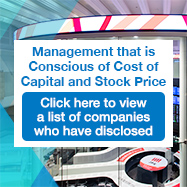
Cash Equity Market (TSE)
Notes on Updates
Trading Volume & Value
Ranking by trading value, derivatives market (ose), commodity futures (ose,tocom), file a tip or a complaint on regulatory matters.
- Disclaimer/ Terms of Use
- Handling of Personal Information
Who Is #IDBCPR ?

Tokyo Stock Exchange
Looking into the engine that drives japan ‘s economy
The Tokyo Stock Exchange (TSE) is one of the largest stock exchanges in asia by trading volume. It plays a crucial role in Japan’s economy and provides a glimpse into the inner workings of the country’s financial system. A visit to the TSE facility can be an educational and eye-opening experience, allowing visitors to witness the excitement and complexity of the stock market firsthand.
Quick Facts
Before delving into the details of the Tokyo Stock Exchange, let’s start with some quick facts:
– The exchange lists approximately 3,800 companies, including some of the biggest names in Japanese business. – Admission to the TSE is free, making it accessible to both locals and tourists. – The TSE is located in the heart of Tokyo and can be easily reached by train or taxi.
How to Get There
To visit the Tokyo Stock Exchange, you can take a train or a taxi. The exchange is conveniently located near Kayabacho and Nihombashi stations, which are served by the Tozai, Hibiya, and Toei Asakusa lines. Whether you prefer the convenience of public transportation or the comfort of a taxi, reaching the TSE is a breeze.
Day Trading
One of the highlights of a visit to the Tokyo Stock Exchange is the opportunity to take a free English-language guided tour. This tour provides a comprehensive overview of the stock exchange and its operations. Visitors can learn about the history of the TSE, explore the trading floor, and even participate in a PC trading simulation.
The trading floor of the Tokyo Stock Exchange is a sight to behold. It resembles a war room straight out of a movie, with traders frantically buying and selling stocks, shouting and gesturing to communicate their orders. The fast-paced environment is a testament to the intensity and excitement of the stock market.
During the tour, visitors can also see the ceremonial bell that once signaled the start of a trading day. This bell holds a symbolic significance, marking the beginning of a new day of trading and setting the tone for the market’s activities.
The madness behind the money
The Tokyo Stock Exchange is not only a hub of financial activity during trading hours but also a remarkable architectural marvel. The sleek and modern design of the facility reflects Japan’s commitment to innovation and technological advancement.
Even when the stock market is not in session, the TSE remains an impressive sight. The building itself is a work of art, with its clean lines and glass exteriors. Inside, there is a museum showcasing key documents and artifacts from the TSE’s history. This museum provides valuable insights into the evolution of Japan’s financial markets and the role of the stock exchange in shaping the country’s economy.
The Tokyo Stock Exchange has witnessed several significant events throughout its history. From economic booms to financial crises, the TSE has been at the center of Japan’s economic landscape. Understanding the dynamics of the stock market is crucial for anyone seeking to grasp the complexities of Japan’s economy.
The TSE and Japan’s Economy
The Tokyo Stock Exchange plays a vital role in Japan’s economy. As one of the largest stock exchanges in the world, it provides a platform for companies to raise capital and investors to trade securities. The performance of the TSE is closely monitored by economists, policymakers, and market participants, as it reflects the overall health and direction of the Japanese economy.
The stock market serves as a barometer of investor sentiment and economic expectations. When the market is performing well, it signals optimism and confidence in the economy. On the other hand, a downturn in the market can indicate uncertainty and caution among investors.
The Tokyo Stock Exchange is home to some of Japan’s most prominent companies, spanning various sectors such as automotive, technology, finance, and retail. These companies play a significant role in driving economic growth and employment in the country.
Investing in the stock market can provide individuals with the opportunity to participate in Japan’s economic growth. By purchasing shares of Japanese companies listed on the TSE, investors can share in the profits and success of these businesses.
The stock market also plays a crucial role in corporate governance and transparency. Listed companies are required to adhere to strict reporting and disclosure standards, ensuring that investors have access to accurate and timely information. This transparency fosters investor confidence and helps maintain the integrity of the market.
The Tokyo Stock Exchange is a symbol of Japan’s economic prowess and global influence. It serves as a platform for companies to raise capital, investors to trade securities, and policymakers to gauge the health of the economy.
A visit to the TSE can provide valuable insights into the inner workings of Japan’s financial system. From the bustling trading floor to the museum showcasing the exchange’s history, there is much to learn and appreciate about the Tokyo Stock Exchange.
As Japan continues to innovate and evolve, the TSE will undoubtedly remain a key player in the country’s economic landscape. Understanding the dynamics of the stock market and its impact on Japan’s economy is essential for anyone interested in the future of this influential nation.
Address And Maps Location:
2-1 Nihonbashi Kabuto-cho, Chuo-ku, Tokyo-to
Find Direction On Google Maps
Subscribe, follow @idbcpr and idbackpacker.com
Related Posts:
- Ishinomori Manga Museum (The Manga Museum of…
- Bank of Japan Currency Museum
- Bank of Japan Headquarters
- Kyushu National Museum
Skip to content
Your browser does not support JavaScript, or it is disabled.Please check the site policy for more information.
- National Report
- Korean Peninsula
- Around Asia
- Manga & Anime
The Asahi Shimbun
TSE moving to extend trading by 30 minutes from 2024
By CHIHAYA INAGAKI/ Staff Writer
October 16, 2021 at 17:15 JST

The Tokyo Stock Exchange is weighing a drastic change to the way it conducts business with plans to extend its weekday trading hours by 30 minutes, upending a custom that has been in place for 70 years.
A report compiled by a working group and released Oct. 15 said that the envisaged extension would not impose an undue burden on those who use the exchange.
Under the new arrangement, the bell for the close of trading at the TSE would ring at 3:30 p.m., instead of 3 p.m. as is currently the norm. The TSE trades for five hours each weekday.
Concerns had been expressed about extending trading hours on grounds it would place an additional burden on securities and other companies that calculate the standard prices for investment trusts that they manage after trading ends.
The exchange is seeking to implement the new hours from 2024 and will submit an application with the Financial Services Agency for approval. The move would coincide with the installation of a new computer system that year.
The primary objective for extending trading hours is to allow for more time to deal with computer glitches that may arise.
In October 2020, trading at the TSE was suspended for an entire day due to a catastrophic computer malfunction. A longer trading day would allow for a possible resumption of trading the same day after the computer problem is fixed.
The change would also move the TSE closer to the trading practices at other major stock exchanges. The 30-minute extension would give it the same number of trading hours as the Hong Kong exchange, but it would still lag behind the New York Stock Exchange, where trading lasts six and a half hours, and the London Stock Exchange that operates two hours longer than New York.
The TSE will gauge the opinions of business groups as well as companies listed on the exchange before compiling a proposed revision of its operating guidelines.
Since 2000, the TSE has tried on three separate occasions to extend trading hours by, for example, eliminating the one-hour lunch break or allowing for trading at night.
But securities companies always raised objections, citing difficulties in securing sufficient personnel for nighttime operations and their emphasis of dealing directly with clients.
Last year’s computer glitch changed the minds of officials at securities companies and paved the way for the latest proposal.
Related News

FSA to search TSE offices over snafu that halted trading for 1 day

TSE president resigns, FSA issues order over system glitch

Optimism over vaccines, LDP poll sends Nikkei to 31-year high

Ex-boss of Don Quijote runs afoul of law, held for stock tip info

2 public entities hold large stakes in 84% of firms listed on TSE

Collapse in BTS label’s shares sparks South Korean soul searching over IPO process
Trending Now

Mie horse-riding festival held without a hitch after criticism
May 5, 2024

Ohtani stars in Hiroshima farm league thanks to 30,000 flowers
May 3, 2024

Camera catches bear attacking light truck on Hokkaido road
April 30, 2024
Recommended

Stories about memories of cherry blossoms solicited from readers

Cooking experts, chefs and others involved in the field of food introduce their special recipes intertwined with their paths in life.

A series based on diplomatic documents declassified by Japan’s Foreign Ministry

A series on the death of a Japanese woman that sparked a debate about criminal justice policy in the United States

A series about Japanese-Americans and their memories of World War II

Here is a collection of first-hand accounts by “hibakusha” atomic bomb survivors.
Learning English
- Asahi Weekly
In-house News and Messages
- The New York Times
BACK TO TOP
- Site Policy
- Transmission of user information to external service providers(利用者情報の外部送信)
Copyright © The Asahi Shimbun Company. All rights reserved. No reproduction or republication without written permission.
- Subscribe Digital Print

- Tourism in Japan
- Latest News
- Deep Dive Podcast
Today's print edition
Home Delivery
- Crime & Legal
- Science & Health
- More sports
- CLIMATE CHANGE
- SUSTAINABILITY
- EARTH SCIENCE
- Food & Drink
- Style & Design
- TV & Streaming
- Entertainment news
Hedge funds pushing for Japan returns get help from Tokyo exchange
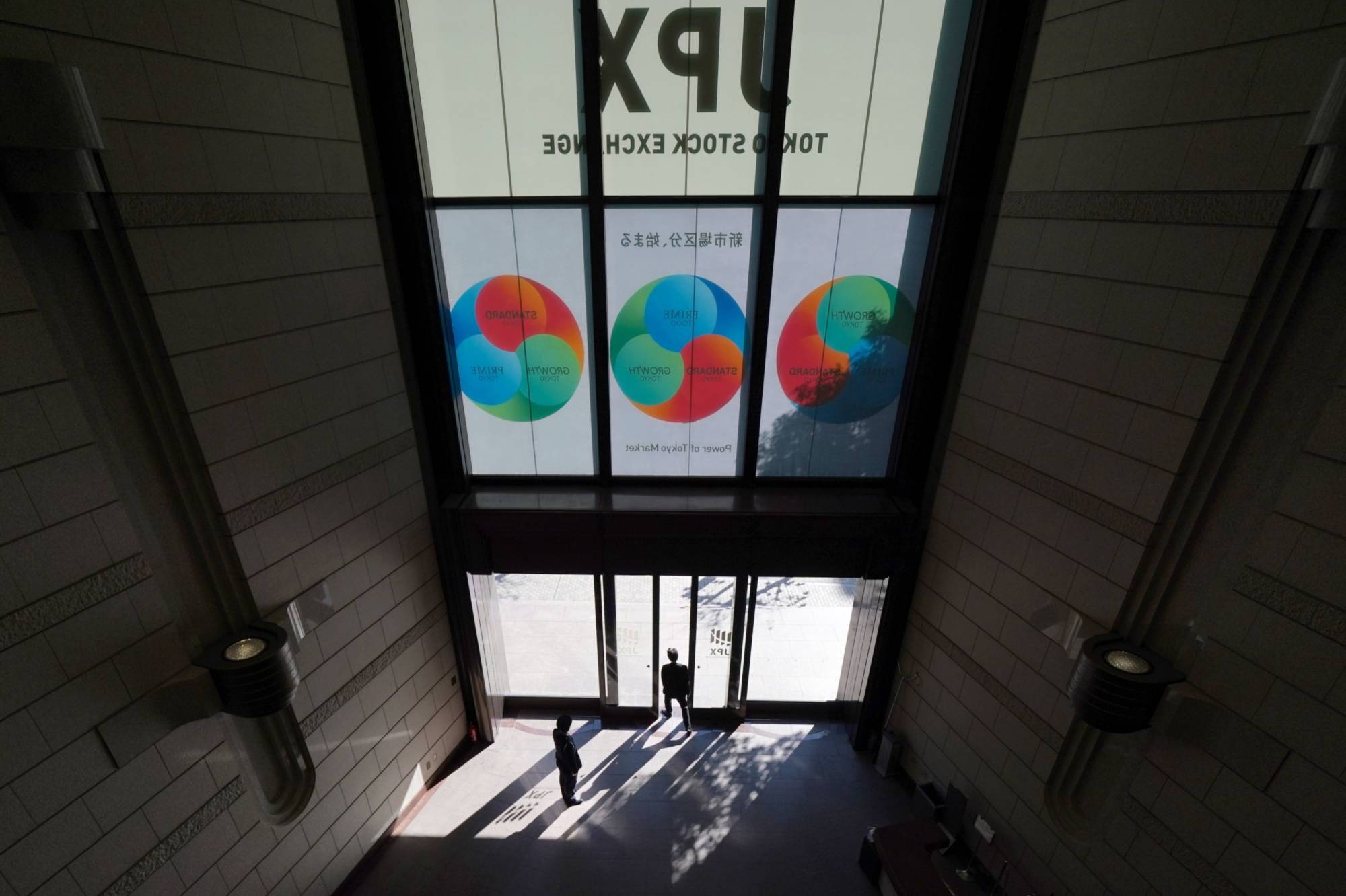
Activist investors are poised to make record shareholder proposals in Japan this year, emboldened by a Tokyo Stock Exchange campaign to boost valuations, as the combined pressure on companies becomes one catalyst for a market that just hit a three-decade high.
Investors including Aya Murakami, the daughter of famous local shareholder activist Yoshiaki Murakami, and Oasis Management’s Seth Fischer say the Tokyo Stock Exchange’s latest campaign to get executives to improve long-depressed valuations is serving as a tailwind for their own efforts. Bourse operator Japan Exchange Group announced in January that it will prod companies that trade below book value to disclose plans to boost their share price.
Japan is one of the world’s strongest major equity markets this year, with the benchmark Topix index hitting its highest since 1990 last week. Analysts also see many other factors for the outperformance, including ultraeasy monetary policy at a time when many countries are tightening, a weaker currency that helps the nation’s exporters, endorsement by big-name investors such as Warren Buffett and inflation finally starting to take hold after decades of falling prices.
The exchange’s move is "epoch-making,” Murakami said in an online interview from Singapore.
While it’s not surprising that activist investors would cheer a campaign that aligns with their interests, the surge in proposals shows they see more opportunity in the market, and there have been some signs their efforts are bearing fruit.
Dai Nippon Printing, a 146-year-old firm that has long been seen as unfriendly to shareholders, announced a plan to buy back as much as ¥300 billion ($2.2 billion) in shares. The Tokyo-based company, which traded below book value, had become a target for billionaire Paul Singer’s Elliott Management.
Hong Kong-based Oasis is calling on construction firm Kumagai Gumi to buy back 20% of its shares and take other steps. Silchester International Investors is requesting a special dividend from Obayashi, another builder. Dalton Investments has urged general contractor Toda to repurchase shares.
"There is an enormous amount of potential in Japan,” said Fischer, Oasis’ chief investment officer. "Shareholders are going to take a more active approach to assisting management, improving their businesses, return on equity and shareholder returns. This is what the TSE is talking about as well, in terms of trying to help companies improve their price-to-book ratios.”
While activists see opportunity and say Japan is changing, there is much work to do. Some 47% of TSE-listed companies still trade with a price-to-book ratio of less than one, according to data compiled by Bloomberg. Japanese CEOs have come to see these low levels as a fact of life in a country with a shrinking population. And despite the Topix’s recent multidecade high, it still trades about 25% below its record in 1989.
Like activists, the exchange has an incentive to increase investor interest in Japanese equities. And like them, it wants to end the sense of resignation that pervades among some of Japan Inc.’s leaders.
Part of the challenge will be to get Japanese institutional investors onboard. Local institutions have long rubber-stamped management’s proposals at annual general meetings regardless of how they are performing. That’s starting to change, according to Oki Matsumoto, president of financial services firm Monex Group. Institutions are now occasionally siding with proxy advisers such as Institutional Shareholder Services and Glass Lewis & Co., he said.
"CEOs of those companies now have a big fear that there will be a lot of votes against him,” Matsumoto said. "If they don’t do anything, they could be even fired. That is why I think many CEOs feel they have to act.”
Fujio Mitarai, longtime chairman of Canon, almost got voted out at the camera-maker’s annual general meeting in March, scraping by with a wafer-thin majority of 50.59%. It was a big shock in a country where approval ratings of more than 90% have been the norm.
For activists, the prize has always been access to Japan’s huge cash piles. Japanese companies collectively hold ¥321 trillion in cash, according to Bank of Japan data, almost double the level in 2008 and equivalent to 58% of the country’s gross domestic product.
For companies, repurchasing stock is a quick way to increase the price-to-book ratio. Shares typically surge when repurchases are announced. And this gets activists and the exchange off their backs.
The bourse’s campaign isn’t legally binding, but peer pressure and shame can be powerful motivators in Japan. While the exchange doesn’t publish a list of companies that trade below book value, it’s easy to find out which ones do. And now, there’s a stigma attached to doing so.
Still, these shame tactics only go so far. The exchange launched a stock index nicknamed the "shame gauge" in 2014, also designed to get companies to boost returns and valuations. But almost a decade later, about half of firms listed in Japan still trade below book.
And with all the fanfare about the Topix reaching a 1990 high, even the activist Murakami sounds a note of caution.
"I feel markets have gotten a bit ahead of themselves,” she said. "The stock market and its valuation have risen quite a bit already.”
Buybacks announced so far this year, while still high, are slightly short of the record level seen last year, according to JPMorgan Chase & Co. and Okasan Securities Group.
"But I do expect changes in the longer run,” Murakami said. "The latest earnings season saw some companies that have never talked about capital policy before coming up with plans to boost their price book-value ratio and so on. We may not see changes immediately, but we can see signs of changes.”
Matsumoto of Monex says years of efforts to boost corporate governance, starting with former Prime Minister Shinzo Abe’s administration more than a decade ago, are finally yielding results. Under Abe, Japan established corporate governance and stewardship codes.
"It’s a bit like water finally starting to spill over from a glass,” he said.
Yuri Okina, chairperson of think tank Japan Research Institute, warns the situation is more complicated than just using cash hoards to buy back shares. Ultimately, she says, companies must work out how to invest their resources for the future.
"What’s more important is to think about a path to sustainable growth,” she said.
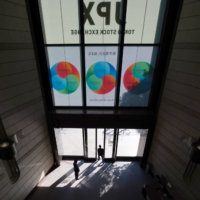
In a time of both misinformation and too much information, quality journalism is more crucial than ever. By subscribing, you can help us get the story right.
Please view the main text area of the page by skipping the main menu.
The page may not be displayed properly if the JavaScript is deactivated on your browser.
- Entertainment
Tokyo stocks open higher on Wall Street advances
May 10, 2024 (Mainichi Japan)

TOKYO (Kyodo) -- Tokyo stocks opened higher Friday on buying spurred by overnight gains on Wall Street, with the U.S. Dow Jones index extending its winning streak to seven days.
In the first 15 minutes of trading, the 225-issue Nikkei Stock Average rose 515.92 points, or 1.36 percent, from Thursday to 38,589.90. The broader Topix index was up 27.71 points, or 1.02 percent, at 2,741.17.
On the top-tier Prime Market, gainers were led by oil and coal, marine transportation and metal product issues.
At 9 a.m., the U.S. dollar fetched 155.39-42 yen compared with 155.42-52 yen in New York and 155.82-84 yen in Tokyo at 5 p.m. Thursday.
The euro was quoted at $1.0781-0782 and 167.53-56 yen against $1.0776-0786 and 167.54-64 yen in New York and $1.0734-0735 and 167.26-30 yen in Tokyo late Thursday afternoon.
Also in The Mainichi
Latest articles.

More Articles
- Go to Page Top

IMAGES
VIDEO
COMMENTS
Tokyo Stock Exchange Visitor Section. TEL:+81-50-3377-7254 (direct) Hours: Monday to Friday 9:00 am to 11:15 am & 0:30 pm to 4:30 pm. (except for national holidays & New Year holidays) Japan Exchange Group (JPX) offers a one-stop shop for a range of products and services with TSE, OSE, and TOCOM markets at its core, ensuring safe and highly ...
The Tokyo Stock Exchange deals with the largest combined capital of any stock exchange in Asia. Hit the market and tour the TSE facility to see the inner workings of Tokyo's economy.
Japan Exchange Group (JPX) offers a one-stop shop for a range of products ... A group visit as part of a travel agency-organized tour should be booked on the website as well. ... a reservation on the website, but I have not received the confirmation email. A12. Please contact us by phone: Tokyo Stock Exchange Visitor Section +81-50-3377-7254 ...
The Tokyo Stock Exchange (TSE) is operated by the Japan Exchange Group (JPX) which came into being in 2013 when the Tokyo Stock Exchange merged with Osaka Securities Exchange. The exchange lists over 2,000 Japanese companies and over 30 foreign companies. Stocks listed are divided into 4 sections: Mothers section for high-growth and emerging ...
The Tokyo Stock Exchange is a chance to see the third largest stock exchange in the world and to visit a museum which provides a fantastic insight into the history of the Tokyo Stock Exchange. One of the very popular things that attracts many visitors is the Stock Trading Game, a virtual trading game with news and corporate information to help you decide your trading. The game lasts 10 trading ...
Let's learn about TSE briefly.Watch this video before you visit TSE.Contents・A brief history・Market centers explanation such as Checker plate and beautiful ...
The Tokyo Stock Exchange (東京証券取引所, Tōkyō Shōken Torihikijo), abbreviated as Tosho ( 東証) or TSE/TYO, is a stock exchange located in Tokyo, Japan . The exchange is owned by Japan Exchange Group (JPX), a holding company that it also lists ( TYO: 8697 ), and operated by Tokyo Stock Exchange, Inc., [2] a wholly owned subsidiary ...
Witness the Tokyo Stock Exchange in action. The market center is open to the public for daily market interactions. ... and visit the Securities Archives Hall to look back at the pre-war stock exchanges. Summary Credit: Central Tokyo Tourism . Photo Credit: Central Tokyo Tourism. Address: 2-1 Nihonbashikabutocho, Chuo City, Tokyo 103-8220, Japan.
Tokyo Stock Exchange - TSE: The largest stock exchange in Japan, headquartered in its capital city of Tokyo. The Tokyo Stock Exchange (TSE) was established on May 15, 1878. The exchange has more ...
Yes, tourists visit the Tokyo Stock Exchange. The Tokyo Stock Exchange (TSE) opens its doors to visitors. The TSE's visitor facility, known as TSE Arrows, operates between 9:00 am and 4:30 pm for self-guided tours without the need for prior booking, though it is closed on Saturdays, Sundays, and public holidays. ...
First is the Tokyo stock exchange, admission is free, Travel to JR Nihonbashi station and a 15 minutes walk (Choose this if you are holding on a JR one day pass or JR pass) Travel to Kayabacho station (Tokyo metro) if you are just looking for the nearest subway station. The visitors' gallery is open to the general public between 9:00 - 16:30.
Christine Benz: We wanted to ask about policies related to investing in Japan. Tokyo Stock Exchange has really pushed for better capital allocation with an eye toward improving shareholder returns ...
The Nikkei 225 is traded and calculated on the Tokyo Stock Exchange each trading day between 1:00 am and 7:00 am CET. Follow us on: See also: Indices. Dow Jones; S&P 500;
0:00 / 1:57. 1X. Tokyo Stock Exchange Inc. said Tuesday it will again consider extending its trading hours, shorter than those of some other major global markets, beyond 3 p.m. to increase ...
Tokyo Stock Exchange Contact: Japan Exchange Group, Inc. Global Strategy TEL: +81-3-3666-1361 (Operator) Contacts NYSE Media Contact: Bridget Walsh [email protected] (212) 656-2298
Trading Hours Summary: The Tokyo Stock Exchange is open Monday through Friday from 9:00 am to 11:30 am and 12:30 pm to 3:00 pm Japan Standard Time (GMT+09:00).. The Tokyo Stock Exchange closes for lunch / intermission each day. The Tokyo Stock Exchange is open for a total of 5 hours per day. The Tokyo Stock Exchange does not have pre-market trading or after-hours trading.
The Nikkei is up some 40% over the past year, versus a 27% gain for the S&P 500. In late February, the Nikkei notched a historic milestone, surpassing its previous high of 38,915.87 - a record ...
Japan Exchange Group (JPX) offers a one-stop shop for a range of products and services with TSE, OSE, and TOCOM markets at its core, ensuring safe and highly convenient trading venues for all market users.
To visit the Tokyo Stock Exchange, you can take a train or a taxi. The exchange is conveniently located near Kayabacho and Nihombashi stations, which are served by the Tozai, Hibiya, and Toei Asakusa lines. Whether you prefer the convenience of public transportation or the comfort of a taxi, reaching the TSE is a breeze. ...
The Tokyo Stock Exchange is weighing a drastic change to the way it conducts business with plans to extend its weekday trading hours by 30 minutes, upending a custom that has been in place for 70 ...
Bloomberg. May 22, 2023. Activist investors are poised to make record shareholder proposals in Japan this year, emboldened by a Tokyo Stock Exchange campaign to boost valuations, as the combined ...
TOKYO (Kyodo) -- Tokyo stocks opened higher Friday on buying spurred by overnight gains on Wall Street, with the U.S. Dow Jones index extending its winning streak to seven days. In the first 15 ...